 In late April, the Frederick County Association of REALTORS® celebrated its 100th anniversary as an organization with a joyous Platinum Jubilee Gala held at the Great Frederick Fairgrounds Event Plex. This was the signature event in a special year of activity which affords present-day members the opportunity to celebrate the contributions of past realtors in Frederick's history, and how they helped shape the Frederick we enjoy today. Many of these individuals are buried in Mount Olivet Cemetery. The Frederick Board of Real Estate was organized on February 8th, 1922 with founding principles created to promote the real estate profession and foster professional behavior in its members (including its own code of ethics) which still reign supreme today. For 100 years, this body, known today as the Frederick County Association of REALTORS®, has demonstrated important leadership in advocacy for a myriad of community issues relating to the real estate trade. With over 1350 current members, FCAR stands as the county’s largest trade association. Holding tried and true all these years later, the overarching mission is that of serving as the “Voice for the Frederick Property Owner.” Much discussion and planning would eventually culminate in the organization of a body of this kind in Frederick, Maryland in February 1922. It would be named the Frederick Real Estate Board. The group had received considerable guidance from Baltimore City’s Board of Real Estate and another that had been recently started in Cumberland. The first official announcement would take place at a meeting held on February 9th and the Frederick News shared information about this new group's start and exclaimed: “Along the lines of recent developments towards the adoption of a more progressive method of doing things for the betterment of the community and conditions in general, the real estate agents of Frederick city and county have organized a real estate board which is in line with similar movements made elsewhere throughout the United States. Like the Chamber of Commerce and the recent campaign in the interest of the new community hotel, this organization is a step forward in the development of a better realty situation and it will reflect a corresponding benefit to the real estate owners and purchasers as well.” The early goals of this organization included “the promotion and advancement of general real estate and house building interests of the city by cooperative effort; and, where possible, the discouragement and prevention of the introduction of other elements into the community which would have a depreciatory effect upon the surrounding real estate.”  Frederick’s Real Estate Board took aim at cooperating with the Frederick Chamber of Commerce and other civic and business organizations in encouraging public improvements to accommodate property owners and securing an equitable system of taxation. The new group set out to further promote Frederick as a location for new and desirable business enterprises, while making important strides to rid, or clean-up, existing “dirty industries” for the betterment of the community. Lastly, this body hoped to form equitable rules for the conduct of the various branches of the real estate business upon a high ethical plan. They sought to establish the fact that membership in the organization would be a guarantee of business integrity and responsibility to the general public. The Frederick Real Estate Board would eventually expand to cover the entire county. In addition, important affiliations would be made between this local Board and both The Maryland Real Estate Board (founded in 1906) and the National Association of Real Estate Boards (founded in Chicago in 1908). In doing this, Frederick’s members received the benefits of experience, advice and best practices from a network of real estate professionals elsewhere in the state, and country. Today, the Frederick Real Estate Board is known as the Frederick County Association of Realtors®. In the beginning, the initiation cost to become a member was $10, with an additional dues cost of $10/year. The local newspaper of February 9th concluded by saying: “An organization such as this cannot but result in great good to the community, and an advancement in the way of improvements, not only in the matter of attaining a city beautiful, but in business conditions generally.” The Inaugural Board The driving force behind Frederick’s inaugural Real Estate Board was a talented group of experienced Frederick professionals. These 12 gentlemen would meet once a month in one another’s offices on a rotating basis. The first officers included Richard Potts (President), Markwood D. Harp (Vice President), Walker N. Joliffe (Treasurer), Markell H. Nelson (Secretary) and Noah E. Cramer. The latter, Mr. Cramer (1860-1930), had been Frederick’s leading realty professional and a well-respected businessman over the previous few decades. Noah E. Cramer was in great company with the initial Board of Directors for the Frederick Real Estate organization. Six years earlier, President Richard Potts was involved with the College Park development surrounding Hood College as a liaison of sorts between the West Virginia-based Swastika Realty firm who owned the building lots, the city officials of Frederick, and customers interested in buying into this subdivision. Potts recognized the importance of local knowledge, insight and connectivity. This prompted him to act in advocating for Frederick to have its own Board of Real Estate in the first place. Although there were those that worked in the field of residential and commercial real estate before 1922, its important at this time to remember those industry pioneers who put the Frederick County Association of Realtors in play back in February, 1922 by organizing the Frederick Real Estate Board. Interestingly, all five founding officers are buried in Frederick's Other City, Mount Olivet Cemetery. Richard Potts Richard Potts (1873-1945) came from a prominent family who lived in Court House Square. He was the 4th generation to live at the prestigious home located at 100 North Court Street, on the corner of West Church Street, and across from Frederick’s Courthouse Square. His great-grandfather was Richard Potts, a noted politician and leader in Frederick throughout his lifetime. After receiving an early education at the Frederick Academy, followed by the Episcopal Academy in Alexandria, VA, Mr. Potts went to work as a clerk at the Central National Bank and Trust Company. In 1914, he entered the real estate business, forming a partnership with insurance salesman David O. Griffin. The firm of Potts & Griffin would last for 30 years until 1943, and was headquartered with an office at 27 N. Court Street, just a short distance from Mr. Pott’s home. Markwood D. Harp Markwood Doub Harp (1869-1926) was a Frederick County native from Myersville who received his education in the local schools there. He came to Frederick City for professional work and served as Frederick County’s Deputy Register of Wills before becoming Clerk to the County Commissioners. He would leave that position to become a realtor and lived at 313 Dill Avenue (renumbered to 269 Dill Ave today). Mr. Harp’s brother, Reno S. Harp, was a leading attorney in town. In the Real Estate Board’s second year, Markwood Harp would take the reigns as president. Sadly, Mr. Harp would die just a few years later in late 1926 after a three-week illness attributed to heart trouble. He was 57 years old. Markwood Harp would be laid to rest in Mount Olivet's Area C/Lot 142. His first wife, Ada C. Adams, had predeceased him in 1905 at the age of 35, leaving Markwood with two sons, Roscoe and Maynard. A strong sense of solidarity within the Frederick Real Estate Board was exhibited at the time of Mr. Harp's untimely death. The members attended his funeral as a group and a touching memorial was published in the local newspaper. Also of note is the fact that all members replaced their real estate listings in the December 4th, 1926 edition of the Frederick News-Post with tribute memorials. Markwood Harp's second wife and widow, Bertha Almeta (Kiracofe), would assume his position in selling real estate and insurance after his death. She would work out of her husband's office at the Pythian Castle on Court Street, and was assisted by her daughter. This would make Bertha, Frederick's "first known female real estate and insurance agent." She lived from 1885-1965. Walker Neill Jolliffe Walker Neill Jolliffe was born at Clearbrook near Winchester, Virginia in 1876. He grew up on the family farm to Quaker parents. He clerked at two different stores in his native Frederick County, (VA) before coming to Brunswick in 1896 to clerk for the general store of Jones & Robinson. In 1900, Mr. Jolliffe entered a partnership with H. M. Jones, of Brunswick, and in 1904 these gentlemen established a dry goods, clothing, boot, and shoe store in Frederick City. Immediate success prompted the pair to open a store in Mr. Jolliffe’s native home city of Winchester. He would soon take up residence at 307 Rockwell Terrace. Walker Jolliffe transitioned over to working here in Frederick in the real estate business in 1919 with his brother, John. The two ran an office at 122 North Court Street. Walker Jolliffe would experience success in his newfound field but would die in November, 1931 of tuberculosis shortly after being sent for treatment at the noted asylum in Sabillasville (MD). He would be fondly remembered at the Board of Real Estate’s 10-year anniversary gala in 1932. Markell Henry Nelson Markell Henry Nelson (1882-1973) was born on a farm in Mount Pleasant District in 1882. He acquired his education at the Central School and later went on to the Frederick Academy. For years, Mr. Nelson clerked in a store at Sandy Hook, across the Potomac River from Harpers Ferry. Later, he became engaged for a time in the insurance business in Baltimore. In 1908, Markell Nelson bought a mercantile business at McKaig, a small crossroads east of Frederick at the intersection of Gas House Pike and McKaig Road. Mr. Nelson won election in 1913 to serve in the House of Delegates of the Maryland General Assembly, beginning in 1914. In 1922, he was working as manager of the real estate department for the real estate, mortgage and investment company of John N. Clary with an office at 28 West Patrick Street. In a few years, Nelson would launch his own real estate firm with a business office located at 31 North Court Street. Noah Edwin Cramer Earlier in his working career, Noah Edwin Cramer (1860-1930) entered the business world in the dry-goods store of his brother, George L. Cramer. Here, he was employed as a clerk, and he remained with his brother for some time. While still a young man, he re-located to Frederick City, and established himself in the real estate and loan business. From the start, he met with much success, becoming one of the best known and most prominent businessmen of the city by the first decade of the 20th century. Cramer also possessed the general confidence of business and financial circles both here and statewide. In 1922, Noah Cramer helped champion the Frederick Real Estate Board, while a partner in the firm of Cramer and Stauffer. Besides his real estate and loan business, Mr. Cramer was interested in various enterprises of the county. He also had a pretty interesting home for himself and family—the former home of Maryland governor, Continental Congress member and Revolutionary War veteran Thomas Johnson, Jr. He would also live at 117 Record Street. Other founding members of Frederick's Real Estate Board in 1922 included John N. Clary (1867-1949), Alfred Wesley Gaver (1876-1940), David Otho Griffin (1884-1954), Grayson Henry Mercer (1879-1945), James Lee Simmons (of Adamstown) (1860-1961), Grayson Hedges Staley (1881-1965) and John Hanson Stauffer, Jr. (1894-1958). All but Gaver are buried in Mount Olivet. Over this century, this organization has done so much more than its primary role of helping to provide humans with shelter, one of the foremost human necessities. The official mission of the Frederick County Association of REALTORS® is to “support and enhance its members’ professional objectives and adherence to the Code of Ethics. The Association strives to achieve this undertaking by providing quality education for members, promoting professional and ethical behavior, and fostering a positive image within our community. The Association is committed to the local Frederick community and strives to promote the role of REALTORS® to the public. Members work with legislators to be involved in the political process and protecting property rights. FCAR works closely with Maryland REALTORS® and the National Association of REALTORS® to achieve these goals.” Happy 100th Frederick County Association of REALTORS®!!! AUTHOR'S NOTE: To learn more about the history of the Frederick Association of REALTORS®, read my three-part history series by clicking the links below. The story appears on my History Shark Productions website.
0 Comments
What a bad title for an internet blog focusing on cemetery preservation, right? Well, no need to fear, as it is all “tongue in cheek” so to speak. You will see by the end of this piece that I should have titled it “A Fairplay Family.” So, last we were together, I was waxing poetic about a broken gravestone of a mysterious origin that recently made its way into our fine cemetery. Best of all, it came to us without a burial, or entombment of any kind. We don’t know who the stone belonged to, where it was formerly located, or who made it—but we sure as heck presented some college-educated guesses. There’s only one way to follow-up a story like that. Yes, I’ve decided to write a story about a family named “Stonebraker.” You heard me correctly—and I promise, in this case, that I have a gravestone in perfect condition, and can identify the decedents that it rests above. The monument in question is quite robust. It stands in Area G/Lot 139, just across the lane from Mount Olivet’s “Confederate Row.” On the west face of this gravestone, one can find the names of several family members buried below. Topping the list is Daniel K. Stonebraker, born April 15th, 1853 and died on September 9th, 1909. Next, we have Daniel’s wife, Sophie E., who lived from May 17th, 1859-July 22nd, 1924. A son, Samuel E. Stonebraker is also here (January 24th, 1881-September 23rd, 1956), and finally, a daughter, Eleanor E. Stonebraker (February 29th, 1884-November 10th, 1884). The interesting thing about my consecutive “Stories in (broken) Stone” published in recent weeks is the simple lesson that so much about people can be gleaned from a single hunk of marble, or specifically granite, in this case. Memorializing in monument form “literally” preserves the stories of lives formerly lived, and ironically keeps alive the ability to unlock genealogy and history to the curious person who insists on taking the opportunity and time to learn more. Here, that individual would be me. I relish playing the role as conduit between the stone and you the reader. I want to pass on various findings such as information from books, newspapers, internet sites and cemetery records all triggered by a cooled piece of lava with names and dates carved into it. In conclusion, gravestones are perfect portals to connections galore. Daniel Knode Stonebraker was born near Fairplay, Washington County, a son of farmer Samuel A. Stonebraker and Sarah Rebecca Knode. The family is German in origin and trace back to Gerald “Garrett” Stonebraker (1742-1813), an early settler of today’s Washington County (which was actually Frederick County up through 1775). Daniel’s grandfather, Michael Stonebraker, was considered one of the largest landowners in Washington County in the early 19th century. His house remained in the family until 1867 and is located about a half mile south of Bakersville, not far from Fairplay to the north and Downsville to the west. Mercersville is better known as Taylor's Landing today. I would find that the Stonebrakers claimed all these villages as their place of origin. Daniel’s father, Samuel A. Stonebraker, moved to Baltimore in 1839 and was the founder of the Baltimore Corn and Flour Exchange and also a member of Sterling, Ahrens and Company Sugar Refiners. It appears that the Stonebrakers had residences in both the Fairplay area and Baltimore. The family farm was situated near the C & O Canal which was a good thing, but was also located just northwest of the main scene of the single bloodiest one-day battle in American history—Antietam. I assume that their land was tramped upon by soldiers and utilized for military camping or caring for wounded. Daniel’s parents (below), along with a few siblings, are buried with earlier generations in Salem Lutheran Church Cemetery in Bakersville. Our subject Daniel would marry Sophia “Sophie” English, daughter of James J. English (1818-1880) and Jane Rebecca Hergesheimer (1821-1897), in the year 1880. Sophie was a Frederick girl who attended the Frederick Female Seminary on East Church Street, today’s seat of county government known as Winchester Hall. Sophie’s father was listed as operating a grocery store in 1850, a teacher in 1860, and a justice of the peace in 1870. Her parents are buried here in Mount Olivet in Area C/Lot 67.
I must address the Stonebraker’s other son, Samuel English Stonebraker with the middle initial of E completing the pattern of Sophie giving all four of her children her maiden name. Born in Downsville (Washington County) in January 1881, Samuel was the first-born child to the young couple. He would go on to practice law and have a successful career in real estate in his adult home of Montgomery County, living in Bethesda and Chevy Chase. He was active on county planning boards there as well. Daniel and Sophie also had another daughter, and this one survived well into into adulthood. She was named Florence English Stonebraker (1895-1977). Plenty more about her in a moment, but Back in Frederick, the 1880 census shows the Stonebrakers living at what is today 436 North Market Street. This is the home of the Mirage Hookah Bar and Lounge today, and many of my age may remember the famed appetite oasis of Casa Pizza which regularly helped facilitate late night bar crawls through downtown. The 1880 census shows Daniel and Sophie “pre-Samuel.” The census also lists Daniel’s occupation of that of a confectioner. I would assume this location served as the site of his business, and also was a home residence on the upper floors. I found reference that the building was either altered or rebuilt by son Samuel in the 20th century. Interestingly, I believe that Mr. Stonebraker was brought to town by his sisters, thus allowing him to meet his future wife in “the City of Clustered Spires.” His sister Alforetta Rebecca (Stonebraker) McCardell (1848-1923) was married to Adrian C. McCardell (1845-1932), another native of Washington County. Mr. McCardell came to Frederick during the Civil War and eventually became prominent in the confectionery business. This man would go on to became a highly successful banker and active civic leader. You may be familiar with Adrian and Alforetta’s talented granddaughter—Claire McCardell Harris (1905-1958), the legendary fashion designer. All three are buried here in Mount Olivet. Another of Daniel’s sisters with a direct link to Frederick was Emma Alice Stonebraker (1846-1930). I had encountered this woman in an earlier Mount Olivet research pursuit in conjunction with white bronze markers and monuments. Emma was a Frederick resident in the early 1880s as she had married Rev. William Augustus Gring (1838-1889). Rev. Gring was the son of Daniel Gring, a noted German Reformed Church minister in York County, PA. William Augustus was a native of Pennsylvania, and at the time of his death had charge of the church in Emmitsburg from 1881-89. Just for fun, I learned that Rev. Gring's brother, Ambrose, was the German Reformed Church's first missionary to Japan. The Grings and buried directly behind the Stonebraker stone, however their unique memorials are certainly not crafted from stone, but rather zinc. The white bronze marker is crafted in the shape of a traditional cross upon a pedestal and contains the name of Rev. Gring’s wife and also, his ten-year old daughter, Vida Rebecca (1875-1885). Emma appears to have been the last individual to have a name placed upon a white bronze marker because she died last (of all decedents) in the year 1930. If you look closely, you can see that Emma’s panel seems out of place as if it had to be specially crafted as the fad of monumental bronze had ended around the time of World War I when the Monumental Bronze Company of Bridgeport, Connecticut had closed. In 1886, I saw a small article announcing that former residents Daniel K. Stonebraker and family were in town visiting relatives here from their home in Norristown, Pennsylvania. Three years later, the Stonebrakers were living in Northwest Washington, DC. From Washington newspapers I also learned that Daniel was working as an agent of the Wilcox Sewing Machine Company with a store on Pennsylvania Avenue. Unfortunately, Daniel made news with the following unfortunate incident. In 1900, Daniel was working as an insurance agent, and the Stonebraker family can be found living at 645 Massachusetts Avenue, about six blocks northwest of the White House and a literal stone’s throw from Thomas Circle, named for Union Maj. Gen. George H. Thomas (1816-1870).  Maj. Gen George H. Thomas Maj. Gen George H. Thomas In case you are curious (like me), Gen. Thomas won one of the first Union victories in the war, at Mill Springs in Kentucky, and served in important subordinate commands at Perryville and Stones River. His stout defense at the Battle of Chickamauga in 1863 saved the Union Army from being completely routed, earning him his most famous nickname, "the Rock of Chickamauga." Thomas followed soon after with a dramatic breakthrough on Missionary Ridge in the Battle of Chattanooga. In the Franklin–Nashville Campaign of 1864, he achieved one of the most decisive victories of the war, destroying the army of Confederate General John Bell Hood, his former student at West Point, at the Battle of Nashville. Daniel K. Stonebraker would die in the nation’s capital on September 26th, 1909 at the age of 56. His cause of death given was rheumatism. He would be buried here in Mount Olivet two days later. Sophie Stonebraker can be found at the same residence on Massachusetts avenue in 1910, but in 1920, the former Miss English lived at 3433 Oakwood Terrace in NW Washington, DC. Sophia can be found living with daughter Florence, referenced earlier. The two were active in the social scene and circles of DC. Florence was a gifted musician and had employ in several government jobs including serving as a clerk for the Treasury Department. Mrs. Stonebraker died on July 22, 1924 and would be buried by her husband’s side in Mount Olivet days later. I found her will on Ancestry.com. I learned from other documentation that the former residence/confectionery on North Market Street would remain in Stonebraker family ownership until 1977. Samuel would join his mother here in Mount Olivet in 1956 upon his death in Bethesda. That only leaves Florence who was the most surprising “chip off the old Stonebraker block” so to speak. Born in Washington in 1895, Florence is a fascinating character to research, leaving wanting to know so much more. Florence would spend most of her adult life in California, and can be found living in San Francisco in the 1930 US Census. She particularly sparked my interest by listing her occupation in that census year as that of a literary writer. Florence is said to have married a gentleman with the last name of Stuart, but divorced. This was interesting because I found her divorced in 1930, but married in the census records of 1940 and 1950 He husband in 1940 and 1950 was her supposed husband named William Stonebraker. This was puzzling, but maybe was it due to her celebrity that he took her name? I can’t see it being a cousin or the coincidence of finding another individual with this name. I’m going with William Stuart, who decided to take his wife’s maiden name as his married name. It is California, after all. Thus I went down the “Florence Stonebraker rabbit hole,” even though she is not buried here in Mount Olivet. I learned that she received a law degree from George Washington University in 1925 and passed the bar in December of that year. I also had my marriage riddle answered. Apparently Florence married William Morrison Stuart, who took her last name. Supposedly, this gentleman had left his second wife to be with her. They would move to southern California and never had children. I soon learned that Florence has somewhat of a cult following by historians and enthusiasts of the pulp-fiction genre era. I found the following blog article on a website entited “Reading California Fiction,” by a gentleman named Don Napoli. “A FLORENCE STONEBRAKER UPDATE The number of words published by Florence Stonebraker (about 4.4 million) will, of course, never be overtaken by the number published about her. Still, the dearth of information regarding California’s most prolific female novelist is startling. Except for one small entry in a Who’s Who compendium (rewritten for an earlier post), I’ve come up with nearly nothing -- no biographical data from reviews, no dust jacket blurbs, no obituaries. So, I was happy the other day when I returned to Google for another search and found a few tidbits from an online newspaper archive. It turns out that Stonebraker was in Washington as a teenager, played the piano, and performed in some amateur recitals. I also found a blurry newspaper photo that shows her in February 1914 helping to commemorate the deaths of sailors on U. S. S. Maine. Stonebraker was seventeen at the time and probably less than fond of this picture.” This was an amazing find, and luckily there was an earlier blog about Florence on this very same website. Here it is: “And now we come to Florence Stonebraker, who once was (I think) one of California’s busiest genre writers. For thirty years—between Pay for Your Pleasure (Phoenix, 1937) and Predatory Woman (Beacon, 1967) —she cranked out more than 80 novels of unsanctioned sex. Married or single, her characters were tempted by, and often surrendered to, their lustful desires. Stonebraker had a conventional side, too, and wrote a couple dozen stories of chaste young women finding love. But her forte was the risqué. I haven’t done enough research to find out much about Stonebraker’s life. She was born in 1896. She married someone whose surname was Steuart. It’s anybody’s guess what she did before publishing her first book at the age of 41. Her early novels are set on the East Coast, so she may have lived there. She doesn’t start using California settings until the early 1940s, suggesting that she moved west during the war. Her most prolific year was 1952, in which she published eleven novels. She stopped writing in 1967. She was residing in Glendale prior to her death in 1977. It’s unclear how many of her books are set in California. I’m sure about Private Practice (because I read it) and willing to bet on Frisco Dame and Love Life of a Hollywood Mistress (because of the titles). But I’m guessing the number is much higher. If she lived in the state and wrote a novel every three or four months, then she probably had little time to find exotic locales. Compiling a list of her novels is not an easy task. The Library of Congress only has hardcovers, all of which she wrote for Phoenix. Jon Warren’s Official Price Guide lists most of the paperbacks. No other library has more than a few of her books, but many are available at Book Finder or similar sites. Adding to the problem is Stonebraker’s fondness for pseudonyms. In addition to writing under her own name, she used Florence Steuart and Fern Shepard for her romances and Florenz Branch and Thomas Stone for her sex stories.” She wrote eighty books and her most prolific year was 1952, when she penned 11. I loved this part of this week's story, and almost have felt a little dirty in presenting covers of Florence's saucy titles, many of which you can pick up on eBay for yourself—should you feel the desire. I did learn that most of these covers were specially posed by outstanding starlets and models of the day. As shown earlier through census records for Florence, I found the evocative pulp-fiction novelist living in San Francisco in 1930, Los Angeles in 1935, San Diego in 1940, and Laguna Beach in 1950. A writer must refresh his, or her, surroundings, or so says the guy who consistently writes from the confines of a cemetery. All I know with certainty is that Florence Stonebraker died in Glendale, CA on August 20th, 1977. I have not found an obituary and the only grave close to what I've been looking for is this final resting place in Forest Lawn Memorial Gardens located in London, Middlesex County, Ontario, Canada. Could be too much of a stretch as I was assuming burial in California. Well, well, well I never saw that coming from the humble family with roots in Washington County. However, you can say that when it comes to genealogy and family history research, everything is in “Fairplay.” When you really think about it, one really shouldn't be all that surprised that one of the country's busiest romance novel writers of the mid-20th century has a direct connection to southern Washington County. Only ten miles east of the old Stonebraker family plantation sits Boonsboro, home to arguably the most prevalent romance writer of all time in Nora Roberts.
April 18th commemorates the 157th anniversary of the death of an individual who I assume is buried here in the friendly confines of Frederick, Maryland, but I certainly cannot verify this as fact. The problem at hand—I don’t even know who this decedent is? You see, we have half of a vintage, marble gravestone in our possession at the cemetery, but it was found recently in a garage in downtown Frederick. All we know is that this individual was 17 years, 10 months and 15 days at the time of death. That claim is substantiated on the stone, itself, as there is a birth date of June 3rd, 1847 and a death date of April 18th, 1865. Do you think you can help us?  Illustration by author/designer Edward Gorey Illustration by author/designer Edward Gorey Typically, genealogists, family historians and tombstone tourists experience frustration and dismay when learning that the ancestor they are looking for is in an unmarked grave. Questions arise as to why a stone, plaque or other form of memorial was not placed on the final resting place. In most cases, money was the reason. Single or widowed individuals that were destitute, institutionalized or died intestate make up most of these cases, as some were buried in Potter's fields and others in mass graves. In other situations, a surviving widow, especially a wife with children, may not have had the means to erect a memorial, needing the money to care for children and self. Still yet, another common cause lies in the fact that a person could have been the last living member of their immediate family, with no heir, next of kin or special friend to make proper arrangements for a monument to adorn a grave. I have encountered interesting experiences of unmarked graves in my own family history pursuits. One such occurred in 2003, however none of the three reasons above could be blamed as the cause. I presented this cautionary tale in a Story in Stone back in January, 2019 titled: History Researchers Beware! Here’s a quick synopsis. My father, uncle and cousin spent multiple hours aimlessly walking the grounds of New St. Mary’s Cemetery in Bellmawr, New Jersey (a suburb of Camden, NJ and Philadelphia just across the Delaware River). We were looking for the grave of my Haugh great-grandparents who died in the 1930s/1940s respectively. This odyssey took place on a hot and humid Saturday afternoon in mid-July. Unfortunately, we came up fruitless, "giving up the ghost(s)" so to speak, and cutting our losses. The cemetery office was closed, and all the stones in this Catholic cemetery were uniform in exact shape, size and style. It was a very frustrating experience as we had traveled 2.5 hours to get there. A call to the New St. Mary’s administration office the following Monday morning shed some surprising news—there was no stone as the Haugh gravesite had always been unmarked. Here was a lot that contained my great grandparents, and to my great surprise, my great-great grandfather Haugh (Irish immigrant/progenitor to America). The plot also contained my great-grandmother’s sister, and a handyman friend. Since it was unmarked, we felt better about ourselves not being able to find it, however disappointed that we wasted so much time and had a sour experience rather than a positive one which usually accompanies these family history quests. Lesson learned, as it always is important to plan and research ahead, especially if coming from out of town and visiting on weeknights and weekends where one traditionally would not have access to cemetery staff or databases for guidance. To remedy the situation for future descendants of ours, my father, who died the next year, instructed me to install a stone on the site we had so desperately searched for that hot and muggy day back in 2003. This became a reality in 2005.  Jesus and the Empty Tomb Jesus and the Empty Tomb Maybe my timing with this story has a connection to the crucifixion of Jesus Christ and Easter? In particular, I recall the story of the empty tomb found in all four canonical gospels. The burial of Jesus was done in haste, after his body was removed from the cross and quickly dealt with in keeping with Jewish law. The body was wrapped in fine linens, and placed in a cave crypt outside of Jerusalem. A large stone was employed to seal the cave’s entrance. Jesus’ body lay in the cave, or so it was thought through Friday night, Saturday, and early Sunday—a period of three days, ending with Easter and the Resurrection. The gospels (MATTHEW 28:3-15, MARK 16:5-8, LUKE 24:4-12, and JOHN 20:2-18) vary a bit as to the next part of the story but a group of women, including Mary Magdalene and possibly St. Mary (Jesus’ mother), went to visit the cave and to their surprise and dismay, the rock had been moved from the entrance, and the body of Jesus was missing. I’m paraphrasing here, but shock and sadness took over the women but this eventually turned to joy when two angels appeared to Mary Magdalene, and then Jesus, himself, revealed himself to his old friend. He told herthat all was well, and that the son of Christ had been resurrected. So, there’s two circumstances, one of an unmarked grave with decedents within, and another with a marked grave (so to speak) with a missing decedent—due to resurrection of course. Back to our main topic, the conundrum of having a broken monument in hand, with no name of decedent, and no known grave location. So, where did this gravestone come from? That is a great question! In early October, 2020, I received a call from my friend and mentor, John Ashbury, one of Frederick’s best historians, and author of several books including the ever important And All our Yesterdays: A Chronicle of Frederick County, Maryland (Diversions Publications, Inc, 1997). John manages several rental properties here in town, and one happens to be on 226 East Church Street. This dwelling is on the south side of the street and backs up to the Frederick Post Office. John said that he had found a broken tombstone in a detached garage out back. He was readying the property for new tenants, and asked if I was interested in bringing this partial gravestone to a more appropriate home—my workplace of Mount Olivet. John gave me the dimension measurements of said stone, along with the scant data carved on its face. We were both equally perplexed as to who this marker once belonged to, and more so, what was it doing in this property’s garage? John hoped I may be able to solve the riddle with my seasoned research abilities, resources and experience with sleuthing gravestones. The only thing John was able to share with me was the fact that the gravestone had been in the garage for as long as the current owner (Theresa Mathias Michel) could recall. Superintendent Ron Pearcey and I promptly went over and picked up the artifact and brought it back to the cemetery. We gave it a basic cleaning, and placed it outside our administration office in a mulch bed on the perimeter of the central chapel mausoleum building. It has been here ever since. Of course, I searched our cemetery database and interment files in the hopes that this gravestone was a simply a duplicate or cast-off associated with one of our 40,000+ inhabitants. I used both the birth date and death date given as the basis of my quest. I knew that when bodies were re-interred here in Frederick’s “Garden Cemetery” from earlier downtown burying grounds, strict rules prohibited the placement of broken or unsightly monuments on our pristine grounds. Most of those stones wound up in the grave hole itself with the decedent. I'm sure others were "adaptively reused" by family in rare cases. We have plenty of unmarked graves in Mount Olivet, and perhaps this stone was stolen as a prank and subsequently broken? Or perhaps it left the grounds for a repair that was never completed? These situations have happened in cemeteries elsewhere, so why not? There is also the practice of setting memorial stones to an individual whose mortal remains were lost (as in a disaster or warfare such as an MIA), buried elsewhere, or cremated with ashes spread at a location like a forest, canyon, bay or beach. I specialize in those buried in Mount Olivet cemetery, of which I am historian and historic preservation manager, but I truly can’t verify if this individual is here, or not after a long study. I’ve also tried researching the records of the last surviving original downtown burying grounds in old St. John’s Catholic Cemetery (located between E. Third and E. Fourth Streets). Again, I've had no luck. I immediately started rifling through other databases such as Findagrave.com and Ancestry.com to check against the two vital dates which I could make out. I also asked my trusted assistant Marilyn Veek to run a property background check in case so we could gain clues for possible family connections to our mystery decedent. I had found a couple of "people of interest," but nothing definitive. I needed to take a deeper dive into research. Well, the best place naturally was to take a look at old Frederick newspapers. I checked the two local newspapers of 1865 in the Frederick Examiner and the Maryland Union. Unfortunately, I came up empty in regard to obituaries and news stories possibly implicating my 17-year-old decedent. I did, however, have an interesting situation with the Examiner edition of April 26th, 1865 which still casts a cloak of gray on my search not being definitive. Someone had removed out two-thirds of the obituary section before this paper was microfilmed. Could my mystery decedent's obit been summarily clipped on purpose or as collateral damage? What I did find in the newspapers of mid-late April of 1865 was plenty of coverage relating to a terrible event in our country’s history. Four days prior to our decedent's death date of April 18th, 1865, President Abraham Lincoln was assassinated by John Wilkes Booth at Ford’s Theater. In case you are interested, here is how our local newspaper covered the event in their weekly edition dated April 19th, 1865. I left the newspaper research angle and next consulted Jacob Engelbrecht’s diary. Many are familiar with this former resident's chronicling of both national and local Frederick events from 1819-1878. Jacob, a tailor by trade, was also the current mayor in spring of 1865 and certainly had his hands full in announcing the horrific news of Lincoln’s death and comforting townspeople in this melancholy time. Mayor Engelbrecht would lead the citizens through the streets of town in a solemn mourning procession. I found nothing in Engelbrecht's book regarding our subject at hand. I wasn't all too surprised as I'm sure our famed diarist was quite occupied in mind, body and spirit on the day of April 18th, 1865 when our decedent breathed his or her last breath. I soon received a new direction to go as Marilyn now shared with me a long list of property owners dating far before our stone’s death and birth dates. She went the extra step and gave me the unfortunate news that based on census record research, none of the late 19th century owners (Ritter, Miller, Cramer, Fahrney) had children who would have been the right age to have died in the time period when each (family) owned the house. To give an idea of one property’s ownership over time, here is a list of owners of this parcel located at 226 E. Church Street. It begins with most recent and goes to the earliest when Tasker's Chance was developed into Frederick Town. The first number on each line is the Courthouse folio locator, followed by the date of deed transfer, and then seller to buyer. 5389/63 (2005) Theresa M Michel to Michel Property Management LLC 1220/967 (1983) PR of Emma Aumen to Theresa Michel 481/282 (1949) Bruce and Evelyn Aumen to Emma Aume 380/578 (1931) Frank L Stoner to Lillie Aumen 380/578 (1931) Lillie Auman to Frank Stoner 368/289 (1928) Ada and Allen Lampe to George and Lillie Aumen HWB 310/566 (1915) J Welty Fahrney and wife to Uriah Lough (who gave to his daughter Ada Lampe) HWB 308/274 (1913) Peter and Katie Fahrney to J Welty Fahrney AF 7/162 (1883) George Wm and Mary Cramer to Peter D Fahrney CM 3/419 (1869) Jos G and Sarah Miller to Geo Wm Cramer JWLC 4/42 (1866) J Alfred and Catharine Ritter to Joseph Miller ES 3/55 (1853) Charles Mantz surviving partner of Charles A Gomber and trading under the name style and firm of Gomber & Mantz and Mary Mantz, wife of Charles Mantz, to J Alfred Ritter WBT 7/184 (1848) Peter and Mary Goodmanson to Gomber & Mantz HS 16/120 (1842) Henry Lare to Peter Goodmanson HS 11/99 (1840) Caspar Quynn to Henry Lare HS 7/303 (1838) George Rice as trustee of Samuel B Lewis to Casper Quinn JS 33/336 (1829) Charles Peters to Samuel B Lewis- the NE quarter of original lot 276 WR 17/559 (1798) Abraham Adams from Allen Quynn, trustee of Valentine Adams deceased - lot 276 J/367 (1764) Daniel Dulany to Valentine Adams - lot 276 I have included the property ownership in its entirety for your viewing pleasure as Marilyn took it back to the very beginning with Frederick founder Daniel Dulany selling to Valentine Adams in 1764. We have Mr. Adam’s grandson of the same name buried here in Area H/Lot 326—Valentine Adams (1799-1860). The stone could be connected with any of those listed after our mystery decedent’s death in 1865. I took particular interest in the house’s ownership by Charles Mantz who apparently held the property from 1853-1866 in connection with a Charles Gomber. The Mantz family goes back to the 1740s here in Maryland. I took particular interest in this information because the Mantz and related Gomber families may provide the key to the gravestone’s presence simply because they owned the property through the lifetime of our mystery decedent. Another factor also plays heavy on my mind as the Mantz and Gomber families buried their dead in a small family burying ground that had been located along Klinehart’s Alley at West Fourth Street. This sacred ground once held the mortal remains of Mantz and Gomber ancestors who fought in the American Revolution. Peter Mantz and John Gomber along with many other relatives would be relocated here to Mount Olivet after its opening in 1854. Perhaps the broken stone has a connection to the Mantz Graveyard? Most , if not all, of the bodies came to Mount Olivet, but a definitive record of the Mantz graveyard does not exist to my knowledge. (Note: click here to read more about the Mantz Cemetery). As for Charles Mantz, he ran a hardware store, found in the 1859 William’s Directory. He lived from 1807-1879 and his wife, Mary, lived from 1816-1860. Both are buried here in Mount Olivet up on Area E/Lot 134. There was a relationship, both familial and business-wise, between Mr. Mantz and cousin Charles A. Gomber (1805-1849). Both bought the house at 226 E. Church together in 1848, the year prior to Mr. Gomber’s death. This latter gentleman is also buried here in an adjoining lot to Mr. Mantz (Area E/Lot 136). As a side note, since we are talking about gravestones, I find both to be beautiful examples of craftsmanship, but neither exhibiting the same style of the stone we are searching for in terms of owner. Did the Mantz family or associated members live on the premises of 226 East Church? Or was it used for some business related purpose? I don’t have any answers, but spent several hours this week trying to uncover a connection. The Mantz family appears to have lived closer to Courthouse Square and West Church Street. I searched each of these folks in our Mount Olivet database and did not find anyone to fit our vital date description. My best bet was 13 year-old Mary Elizabeth Mantz listed in 1860. I would find that she married a gentleman named Samuel Bean (1840-1883) and moved west. In doing internet research, I stumbled upon an archive at the University of Wyoming's American Heritage Center in Laramie. Attached to the library aide finder info online, I found the following abstract which holds a great deal of information on Charles' children who had moved westward including the fore-mentioned Mary: "The Mantz family settled in Frederick, Maryland, around 1747. Charles Mantz (1807-1879) lived his entire life there and with his wife Mary Ann had children Isabel, Laura, Emma, Mary E., John E., Charles Gomber and Horatio McPherson ("Makie"). Charles G. Mantz (1853-1924) began his career as a bookkeeper in Omaha, Nebraska, was involved in the cattle business in Wyoming, conducted an investment and loan business in Fort Collins, Colorado from 1884-1892, and finally settled in Denver, Colorado. He married Caroline E. Armstrong, daughter of Andrew Armstrong of Fort Collins in 1891, and had children Charles A., Florence and Anna E. Mantz. Charles A. Mantz (1892-1970) was a successful Denver attorney. Horation McP. Mantz was a cattle dealer in Rock Creek, Wyoming in the 1880s. Isabel Mantz married Dr. John Johnson; Emma Mantz married a Mr. Hottel; and Mary E. Mantz married Samuel Bean (1840-1883). Bean was involved in various business partnerships with Hottel, George Bean, Charles G. Mantz, and Horatio McP. Mantz in Omaha, Nebraska." Mr. Bean is buried in Omaha's Mount Prospect Cemetery under a prestigious monument, but Mary's gravesite is not listed, at least on Findagrave and Ancestry.com. I conjecture the possibility of a remarriage or her name not being inscribed on her husband's monument. She's not the first person to not have a stone marking her gravesite now is she? Back to Frederick, Maryland, it also appears that Charles A. Gomber’s brother, Ezra Mantz Gomber, could have lived directly behind this property with a home that fronted on East Patrick Street at one time. In the 1860 Williams Directory, I found Ezra's widowed wife, Margaret, and daughters Minerva and Sarah who would both marry and live long lives. After combing through the Mantz and Gomber families, I realized that I should give the Ritters a good once over as they were really the ones that lived at 226 East Church Street in 1865, selling a year later. The family is buried in Mount Olivet as patriarch John Alfred Ritter (1822-1892) was a prominent businessman/grocer in town. In seeing the grave lot, I was intrigued with the fact that there is a large, group stone with multiple family members names. Could this have served as a replacement for an individual stone originally erected for a family member? The 1860 was also a tease as Mr. Ritter had a daughter in 1860, Ann, who was 12 in 1860. I excitedly thought to myself, "Wait a minute, hold the phone!," this young lady would be 17 years-old in 1865! I next searched Ancestry.com for the Ritters in the 1870 census, selfishly hoping not to find her with the family, although I knew she could also be married at the time. When I came to the record, I found the following. Drat, she was alive and well to my immediate dismay! Ann S. Ritter wasn't my stone recipient and would go on to marry Samuel I. Thompson. I did find that she would die in 1891, and is buried in Mount Olivet's Area G under a fine granite monument. Feeling guilty over my ill-will towards this lady, I do want to express here that despite a miraculous discovery in connection with the identity of my stone holder, I am very pleased that the former Miss Ritter experienced an additional 26 years of life in this world instead of passing on April 18th, 1865. My only other thoughts revolved around the stone coming from any of the old cemeteries around town. As said earlier, if it was broken, Mount Olivet wouldn’t accept it. An old burying ground existed a short distance away in the form of the “new” or second burying ground of the Evangelical Lutheran Church. This was on the southwest corner of East Street and East Church Street extended within the friendly confines of today’s Everedy Square office and retail center. I’m thinking that the stone could have been excavated at the time the Everedy Company took form in the early 1900s, or when the property was adaptively re-used by Bert Anderson in the latter part of the century. Maybe the curious marble piece was simply put to use as a sturdy doorstop or wheel chock?
Henry C. August Schraeder (1823-1889), was here through the Civil War era that much is known and he would marry Mary Zentmeyer of Wolfsville in 1856. August can be found in the 1860 US Census with his wife, infant daughter and has his mother-in-law and sisters-in-law Eliza and Lena) living with him. Lena Zentmeyer, age 13 in the census record, makes her a candidate for being 17 in 1865. I did a little search into August' father-in-law, Jacob Zentmeyer (1784-1854), and found him to be buried in St. Mark's Lutheran Graveyard in Wolfsville. His wife Mary (b. 1796) would join him there in 1876. The method to my madness was in looking at the gravestones of these individuals. As you can see, the style is very similar to our mystery stone. Could they be the work of son-in-law August Schraeder? Unfortunately, I could not locate a census record for either Lena Zentmeyer in 1870 as she is not living with August and his two Marys. She could have died prior to 1870, or got herself married. By this time, August had moved to Baltimore and eventually lived in the Federal Hill neighborhood, not far from today's Camden Yards. Mr. Schruder/Schraeder/Schroeder was working as a porter in a store and apparently not cutting gravestones. August' wife, Mary, died in Baltimore in 1875 and he would marry a second time. This woman, Johanna Schraeder (1842-1894) is buried in Mount Olivet next to her first husband, Carl P. Adolph Lauer (1820-1874), in Area H/Lot 264. Could August Schruder/Schraeder be related to Frederick Schroeder the carpenter, coffin-maker and undertaker. I think they were brothers and a business relationship between both gentleman is not far-fetched. It does not explain the letters found on our stone, however. As for the "ke" (possibly "lke")as the last letters of Schraeder's business partner carved on the stone, my mind keeps telling me the name"Roelkey," which could have been spelled Roelke. There were several leading businessmen, of this name in town, all related, and all immigrants from Hesse-Cassel and practically the same age as August Schruder/Schraeder. Some of these Roelkeys specialized in metal work, and early monuments depended on iron pins to hold the dye part of the grave monument upright. Also no strangers to grave plots, iron fencing was regularly used to enclose family lots. I venture the guess that this could possibly have been a short-lived, co-partnership between these individuals whose name could have been spelled dozens of ways. Another fail on my part I guess, as I'm pretty close, but yet so far away. If I found the maker, I would have a good geography lead and I could take solace in knowing who made our broken stone and what local cemeteries could it have been destined for. But then again, there is the real chance that this stone could simply be a dud, a throwaway and castoff. It could have been originally inscribed with a spelling error or wrong date? Perhaps it was dropped or broke at the monument works, or en-route to a cemetery? These are real possibilities as well that would render a slab of marble like this useless for memorialization, but perfect for wagon ballast, a solid foundation for something, or a stepping stone of sorts. We will likely never know, but at least it's residing now in a cemetery—a place it was made to be. I do, however, believe this stone marked a specific grave at one time. If you look close at the photo above, you will note this breaks on the lower right base of the gravestone. This is common as the iron pins that hold the upright dye (main stone panel) will expand and contract if affected by water. This usually happens to older stones that have become tilted or leaning because of ground shift and movement beneath. This eventually leads to the pin rusting and becoming brittle. A good wind, or continued fight against gravity while leaning will snap the pin right off. Note the rust discoloration and trace of a broken pin still within the stone. This whole exercise has been somewhat like an Easter Egg hunt without the sweet treat at the end. My wish for a "resurrection" of this stone in our cemetery, or another, will have to be put on hold for the foreseeable future. Regardless, may the person, whom the stone was originally made, be resting in peace, whoever, and wherever, they may be.
Inspiration for these “Stories in Stone” comes in various forms. It could be a picturesque monument, or perhaps a familiar personage of Frederick’s past. There are unique names to be researched, while sometimes this same research causes me to stumble upon an interesting happening, or tragic event. When embarking on these history explorations to learn more about an individual, I always brace for enlightenment because I never know where the journey may take me. I love learning about other places and events outside of Frederick, but my favorite topics are those that connect to Frederick somehow. Of course, I get that chance automatically when connecting the dots to anyone buried in our historic Mount Olivet Cemetery. For this particular edition, my eye was recently caught by the mention of a strangely-named town on a stone—one I was certainly not familiar with, but perhaps many of our readers may be. The moniker is carved into a large monument that can be found in Mount Olivet’s Area C, one that today offers a commanding view of the Grove Stadium parking lot and, on any given evening without a baseball game, showcases dozens of young people learning how to parallel park with the help of driving school instructors. The geographical municipality that has sparked my interest is known as Rapid City, Dakota. This is the info offered on one of the customized, epitaph panel sides (of the monument) in conjunction with a five-year-old decedent named Eugenie Goff who died on January 23rd, 1887. To further pique my curiosity, I wondered which “Dakota” contained Rapid City, as this is all the stone and our cemetery records told me. In doing some state geography exploration, I soon learned that the Dakota Territory consisted of the northernmost part of the land acquired in the Louisiana Purchase in 1803, as well as the southernmost part of Rupert's Land, which was acquired in 1818 when the boundary was changed to the 49th parallel. The name “Dakota” refers to the Dakota branch of the Sioux tribes which occupied the area at the time. Most of Dakota Territory was formerly part of the Minnesota and Nebraska territories. When Minnesota became a state in 1858, the leftover area between the Missouri River and Minnesota's western boundary fell unorganized. That would soon be remedied. The Territory of Dakota eventually became an organized, incorporated territory of the United States on March 2nd, 1861. This would last until November 2nd, 1889, when the final extent of the reduced territory was split and admitted to the Union as the states of North Dakota and South Dakota. Our pivot point, little Eugenie Goff, died nearly three years earlier in January 1887. Rapid City is the second most populated city in South Dakota and the county seat of Pennington County. Named after Rapid Creek, where the settlement developed, it is in southwestern South Dakota, on the Black Hills' eastern slope. Today, Rapid City is known as the "Gateway to the Black Hills" and the "City of Presidents" because of the life-size bronze president statues downtown. The city's western and eastern parts are split by a low mountain range. I rapidly learned that this town is home to Ellsworth Air Force Base, and boasts a bevy of tourist attractions such as Art Alley, Dinosaur Park, the City of Presidents walking tour, Chapel in the Hills, Storybook Island, and Main Street Square. The historic "Old West" town of Deadwood is nearby as well. In the neighboring Black Hills are the tourist attractions of Mount Rushmore, the Crazy Horse Memorial, Custer State Park, Wind Cave National Park, Jewel Cave National Monument, and the museum at the Black Hills Institute of Geological Research. To the city's east is Badlands National Park. Let’s get back to Eugenie Goff. Her life was but a fleeting moment in the grand scheme of things: "5 years, 3 months and 8 days" as is inscribed on her “tombstone” panel. So how, or why, did this little girl die in early 1887? And why was she buried here in Frederick, as opposed to her native home in today’s South Dakota—a distance of 1,565 miles away? Eugenie Darlenie Goff was born October 15th, 1881, the daughter of George Henry Goff and wife, Grace Christine Erickson. Neither of Eugenie’s parents were natives of the Dakota Territory. Mr. Goff, born in 1845, hailed from Warren, Rhode Island which I found is the smallest city, in the smallest county (Bristol) in the smallest state in the US. He was the son of a cabinetmaker from Massachusetts (Hiram Goff), but lost his father at the time he was 14 years old. His mother, Martha Galusha (Smith) Goff (b.1815), continued raising her son and a daughter, Elizabeth Eugenia (b. 1841), into adulthood. They lived in the home of Martha’s widowed father, Jonathan Smith, in Warren, Rhode Island. Apparently, George began his sojourn west somewhere in the 1860s, but I failed to find if he participated in military duty during the American Civil War. He was enumerated in the 1865 Massachusetts state census and found living in Springfield, roughly two hours northwest of his native Warren, Rhode Island. Two years later, we find George in Lincoln, Wisconsin getting married to a woman named Ellen J. Oliver. Kudos to my research assistance Marilyn Veek for finding this missing puzzle piece as the gap exists for Mr. Goff and the 1870 census on most family trees. The research difficulty level comes with the spelling of "Goff" as "Gough." For one reason or another, the marriage fizzled as Ellen J. (Oliver) Goff married Oliver Hollenbeck in Lincoln (WI) in 1873. George eventually can be found in Eau Claire, Wisconsin at which place he would marry Grace Christine Erickson on August 30th, 1876. The new Mrs. Goff was a Norwegian immigrant who had come to this country with her parents in 1872, eventually settling in Wisconsin. I had difficulty tracking the young couple’s movements in the late 1870s into the 1880s. I deducted from a later census that George and Grace stayed in Wisconsin at least until after the birth of their first son, Charles A. Goff in August of 1879. The trio moved to the Dakota Territory sometime before 1881, and the birth of Eugenie. Rapid City The public discovery of gold in 1874 by the Black Hills Expedition, led by George Armstrong Custer, brought a mass influx of European-American miners and settlers into this region of the Dakota Territory. A group of unsuccessful miners founded Rapid City in 1876, trying to create other chances for their fortunes. It was eventually named for the spring-fed Rapid Creek that flows through it. The frontier village was promoted near and far as the "Gateway to the Black Hills.” The land speculators measured off a square mile and designated the six blocks in the center as a business section. Committees were appointed to recruit prospective merchants and their families to locate in the settlement. Such merchants soon began selling supplies to miners and pioneers. The city's location on the edge of the Plains and Hills and its large river valley made it a natural hub for the railroads that were constructed in the late 1880s from both the south and east. The Goffs were cattle farmers, as far as I can tell, but perhaps George began as a merchant, tradesman or speculator in keeping with the narrative of Rapid City? Regardless, having railroad access readily available, or should I say, “rapidly available” in their new home, it’s easy to see how the Goff family traveled to Frederick in advance of their daughter’s untimely death in early 1887. But, why did they come here in the first place? The answer likely lies in my theory that the Goffs were visiting family here in Frederick for, or immediately following, the Christmas and New Years holidays. You see, George’s mother, Martha, would eventually remarry a Frederick resident, a widower named Alexander Woodward (1821-1910). They met in Chicago as Mr. Woodward had volunteered his services to help rebuild the city after the devastating fire of October, 1871. Mr. Woodward was a brick mason turned greengrocer who lived at the northeast corner of W. 4TH and N. Bentz streets. I’m placing this as the property at 133 W. 4th today. Eugenie’s obituary is brief, but her illness seems to have come about quickly. I found scant information this in the January 24th edition of the Frederick News. As the article recounts, her funeral was the following day after her death, and our cemetery records suggest that she was actually placed in our public vault, and awaited burial at a later time when there were more favorable conditions due to weather and frozen ground, minus the modern era digging equipment that would come in subsequent years. Once interred in the Woodward family lot in Area C, she joined Alexander Woodward’s first wife (Ellen). Upon the monument panel that reveals Eugenie’s place of origin (Rapid City) and vital dates, one can see inscribed a quote that reads: “Oh Lord, what is life? It’s like a flower, we see it flourish for an hour, with all its beauty on, but death comes like a wintry day and cuts the beautiful flower away.” I found that this to be a portion of a popular hymn attributed to British poet Jane Taylor (1783-1824). Taylor was also a novelist, and this particular verse was popularly used on quilted samplers during the 1800s. Jane Taylor is best known for the lyrics of the widely known "Twinkle, Twinkle, Little Star.” I was fascinated by this poignant line in respect to a little girl, whose life and death can be personified by a flower. It’s just so “Victorian,” perfectly illustrating the rural, garden cemetery style that Mount Olivet was originally designed to portray. I read that Taylor’s poem was in part inspired by the bible’s second verse of the Book of Job, Chapter 14. In case you are curious, Job 14 goes as follows: “We are all human beings. Our life is short and full of trouble. 2 Our life is like a flower that grows quickly and then dies away. Our life is like a shadow that is here for a short time and then is gone. 3 God, do you need to keep an eye on something so small? Why bother to bring charges against me? 4 “No one can make something clean from something so dirty. 5 The length of our life has been decided. You alone know how long that is. You have set the limits for us and nothing can change them. 6 So stop watching us; leave us alone, and let us enjoy this hard life until we have put in our time. 7 “There is always hope for a tree. If it is cut down, it can grow again. It will keep sending out new branches. 8 Its roots might grow old in the ground and its stump die in the dirt, 9 but with water, it will grow again. It will grow branches like a new plant. 10 But when a man dies, he becomes weak and sick, and then he is gone! 11 Like a lake that goes dry or a river that loses its source, 12 so people lose their lives, never to live again. The skies will all pass away before they rise from death. The skies will all disappear before anyone wakes up from that sleep!” With limited space on a monument face, the quote used certainly conveys the point at hand in a swift and dare I say rapid, way. I next started to look at other people buried in this grave plot of Area C/Lot 88. This exercise ultimately allowed me to better see the relationships of decedents buried within. In addition to Eugenie’s panel on the principal family monument found at this site, the other three sides correspond to her step-grandfather, Mr. Woodward, along with his first wife, Ellen (Burrall) Woodward, and Eugenie’s paternal grandmother Martha (Smith) (Goff) Woodward. Surrounding the monument are the graves of Alexander Woodward’s son William and adult daughters—Sarah Catherine Fraley and Mary Jane Lewis. Mrs. Lewis’ husband, George Thomas Lewis (1842-1915), a former Union soldier in the Civil War, is also buried here, as is her sister-in-law and mother-in-law. The Lewis' were former residents of Leesburg, VA. One additional person of special interest is residing here as well. This is the namesake for little Eugenie Goff— Eugenie Elizabeth Goff. As mentioned previously, Miss Goff was George H. Goff’s older sister and lived out her life in Frederick with her mother and step-father (Mr. Woodward). Our cemetery records note that she served as a housekeeper, and likely caretaker, for Mr. Woodward following her mother’s death in 1893. I found them living at 409 N. Market Street in the 1900 US Census. Street numbers have changed and this would be 209 N. Market today which is likely the building that serves home to Bushwaller's Tavern today, or the building to the immediate north of it at. By this same year of 1900, Rapid City had survived a boom and bust and was developing as an important regional trade center for the Upper Midwest. However, I found the Goff family living elsewhere in a place called Maxwell in Meade County, South Dakota. This locale is in a neighboring county named for Gen. George G. Meade, who by the way, was given charge of the Union Army of the Potomac here in Frederick just mere days before the Battle of Gettysburg. Meade County is located in the ranching area of western South Dakota, and I’m assuming that this was the farming performed by the Goffs. The county is the largest in the state, encompassing more than two million areas and surpasses the states of Delaware and George H. Goff’s native Rhode Island in land size. In addition to the agriculture industry, Meade County can boast of having Ellsworth Air Force Base in its southern boundary adjacent Rapid City and nearby Box Elder, SD. Meade County’s county seat is Sturgis, known for the annual motorcycle rally and home to Fort Meade Veterans’ Administration Medical Center. This VA facility transitioned from one of our country's earliest frontier cavalry posts which was home to both the Fourth and Seventh cavalries. It was at this very military installation that the “Star-Spangled Banner” was first required to be played. Well, aside from learning the colorful history and geography of Meade County, I couldn’t find the village or environs of Maxwell anywhere on a map. The area of the famed Badlands is quite desolate and population centers are far and few. As I explored further, I actually found a location named Goff Ranch near a place noted as Mud Draw on a Google map. Maxwell and Mud Draw sound a bit similar, and I think this could be it because I found an obituary of one of George and Grace’s other children who was born on a ranch homestead near the Tepee Creek, adjacent the Cheyenne River. This property was recently for sale and was listed as being 2600 acres in the Badlands and located where the prairie begins, just a few miles northeast of Black Hills. I’m assuming the accompanying photo paints a nice picture of the Goff Ranch. I found next to nothing on the Goffs in South Dakota, but due to them basically "living off the grid," it really comes as no surprise. I did find an article in the Frederick newspaper in 1891 that must have entertained the local citizenry here. I next set out searching for White Owl, also in Meade County, South Dakota, which contains the final resting places of Eugenie Goff’s parents. This is about a 30-minute drive (26.5 mi) via SD-34 E and County Hwy MC-39 if you are ever inclined to make the trip. Talk about remote, White Owl is an unincorporated rural village in east central Meade County, South Dakota, United States, with a population of 61 as of the 2010 census. It lies along Highway 34, 55 miles east of Sturgis. White Owl was established in 1890, and opened as the first post office in Meade County in 1893. At an elevation of 2,792 feet, the village today boasts a Baptist church, a community center, post office and oddly enough, a renowned fashion boutique. Most important for our storytelling purposes, here is also where one will find the White Owl Cemetery. A remote and tranquil place, this is the eternal repository for the mortal remains of George Henry and Grace Christine (Erickson) Goff. Judging from the photos found on FindaGrave.com, the burying ground certainly oozes that rustic, frontier charm. White Owl Cemetery is roughly 1,554 some miles from Mount Olivet—the separation from a child’s grave to her parents. I’m sure for the Goffs, it must have been a true comfort knowing that Eugenie’s grandmother and aunt could easily visit their little daughter’s gravesite, perhaps to place flowers as well. As for Miss Eugenia Elizabeth Goff and her stepfather, Alexander Woodward, the two would die just seven months after George Henry Goff who died in August, 1909. Interestingly, both individuals would die exactly two weeks apart in March, 1910. Thanks to the work of Findagrave.com and Ancestry.com volunteers and family historians, I learned a bit more about the lives of Eugenie’s six siblings. In contrast to her own short life, most of these lived to be quite old, a cruel irony I’d have to admit. There is Arthur Henry Goff (1892-1978), a World War I vet who died at age 86. Another sibling, Clarence Galusha Goff (1886-1981) participated in World War I, but reached the ripe old-age of 94, as did kid sister Adelaide D. (Goff) Quinn who is buried near her parents in White Owl cemetery. Nellie (Goff) Tivis is also interred in White Owl, as she lived to be 102 (1883-1985). Not to be outdone, brother Charles Alexander Goff (1879-1983) attained 103 years on planet Earth. “Charley,” as he was known, was born in Wisconsin as earlier mentioned, and had accompanied his sister Eugenie upon her ill-fated trip to Frederick in 1887. I would learn that he had a special connection his youngest sister, Martha “Mattie” E. (Goff) Newcombe (1899-1997), 20 years his junior. While living along Tepee Creek, Mattie’s oldest brother (Charley) apparently put her on a horse at the tender age of 3. This led to a lifetime love of horses as Mattie successfully began riding broncs, and later parlayed her natural talent into trick and relay riding, becoming extremely good at both and billed as a "World Champion Trick Rider." The self-taught horsewoman participated in her first major event in 1921 in Sioux Falls. Mattie (Goff) Newcombe standing on her horse with the moniker of “South Dakota’s Girl Trick Rider” was named All Around Cowgirl in 1927, the same year she performed for President Calvin Coolidge during his summer stay in the Black Hills. In 1927, she married a neighborhood cowboy, Maynard Newcombe and became a true ranchers' wife in eastern Meade County. She would retire riding professionally in the 1930s but is forever enshrined by a museum she helped create in Fort Pierre, South Dakota. This is the Mattie Goff Newcombe and Casey Tibbs Center—a facility that hosts both an event arena and multi-purpose conference center. It also includes a historical museum devoted to the riding and rodeo sport of South Dakota. The museum displays many of Mattie Goff Newcombe’s belongings and memorabilia from her days as a trick rider. Mattie Newcombe was one of the first inductees and charter members of the National Cowboy Hall of Fame in Oklahoma City in 1961. She was inducted into the South Dakota Hall of Fame in 1989 and was elected to the National Cowgirl Hall of Fame in Texas in 1994. In 1995, she received the Pioneer Award from the Black Hills Stock Show. Mattie passed away in July, 2005 at what newspapers said was the age of 98. However, in seeing her age in various census records from the early 20th century, I have her born in December, 1899, making her 105 by my calculations. Now that’s a trick as impressive as her riding stunts! Both Mattie and Charley are buried in Elm Springs Cemetery in Elm Springs, South Dakota about a half hour ride to White Owl and the old family homestead. We can only imagine the life experiences that little Eugenie Goff could have experienced in the wild west had she not passed at the tender age of five. It again harkens the question to be asked, “What is life?” We are all delicate flowers, and like flowers, and cattle for that matter, some are just hardier than others I guess.
 Well April Fool’s Day has come and gone once again, and I wracked my brain trying to find a timely story to tell about someone in our cemetery, but settled on a decedent who wasn’t a fool or deceiver, but did spend a portion of his career “clowning” around. Speaking of April Fool’s Day, I came across an interesting connection to Ukraine which I seem to recall has been in the news a time or two here of late. Aside from this year I assume, April Fools' Day has been widely celebrated in the city of Odessa with the special, local name Humorina. This holiday arose in 1973 and involves April Fool pranks being revealed by saying "Pervoye Aprelya, nikomu ne veryu" — which means "April the First, I trust nobody" — to the recipient. The festival includes a large parade in the center of the city, free concerts, street fairs and performances. Festival participants dress up in a variety of costumes and walk around the city fooling around and pranking passersby.  One of the traditions on April Fools' Day is to dress up the main city monument in funny clothes. Humorina even has its own logo — a cheerful sailor in a lifebelt — whose author was an artist named Arkady Tsykun. During the festival, special souvenirs bearing the logo are printed and sold everywhere. Since 2010, April Fools' Day celebrations include an International Clown Festival and both celebrated as one. April Fools and Clowns remind me of a recent visit I made to see my uncle in Delaware last fall. He told me in advance that he had found a very special family heirloom for me. I was quite intrigued as the official family historian. My uncle Bob lives in his childhood home in Delaware City, Delaware. My late father spent most of his childhood here as well, and is buried in a cemetery directly across the street. The basement of this one-story rancher is an eclectic storage pit of items from my father and family’s past— half represent family treasures, while the other half contains junk. On this particular sojourn, I would soon find myself in possession of a custom art piece, estimated to be at least 70 years old, and created by my father’s own hands! This was from a short-lived period in which my father took up painting as a hobby. From having a few of his other pieces, he was no Michelangelo or Florence Doub, but he wasn’t all that bad. My brother has an old barn painting that he did, and I have an original Edwin A. Haugh masterpiece in the form of a rendering of my GGG Grandmother’s house in Delaware City. This framed piece hangs prominently over my home office computer desk. This was the introduction my uncle gave me as he handed to me what seemed to be a framed object, roughly 17"x21" and cloaked in a plastic, black trashbag. I excitedly opened the bag and removed my prize. To my shock and chagrin, I was somewhat horrified to see the subject of this vintage artwork. It was a clown, and a creepy one at that! I looked closer and eerily saw features of my dad in the piece, which made me wonder (or question) the piece even more. I felt as if this gifting by my uncle was at least in the spirit of April Fool’s Day. Either way, it’s safe to say that I was definitely “clowned” as the kids say these days. On my two-hour trip home from Delaware, I resisted the urge to throw the clown art out the car window at multiple times starting at the point I crossed the Millard Tydings bridge, and ending as I crossed the I-70 bridge over the Monocacy, just east of Frederick. I guess you could say that I’m simply not a big fan of clowns. I understand their purpose, and respect their acting ability and stunts in accompanying circuses, a thing of the past these days of course. I just try not to think about them in my day to day activities, all-the-while knowing that I could see a group of 20-30 piling out of a Volkswagen Beetle anywhere I go. As for my clown artwork, it has been conveniently tucked away between a file cabinet and wall in my basement. I pulled it out the other day for the sole purpose of this story, and nothing more. Actually, I took up a special interest in clowns a few weeks back in preparing a lecture on Mount Olivet ties to St. Patrick’s Day. This was for a Friends of Mount Olivet soiree event we held at the Key Chapel back on March 17th. I was interested in learning the background of 10 distinctly Irish names, and finding examples of each here buried within Mount Olivet. One of these was Thomas Joseph O’ Neill (1879-1944), whose final resting place can be found in Area X/Lot 27. I looked in our cemetery’s electronic database and found the following entry for this gentleman: Occupation: Brush Maker. Thomas was born in Portland, Maine. For several years he was employed as a clown by the Ringling Brothers Circus. He died at the YMCA where he resided for about 20 years. I was intrigued, primarily because this gentleman worked as a clown, but more so, he was an entertainer associated with the legendary Ringling Brothers Circus. I immediately wanted to learn more about the origins of this famed touring company as I had seen the Barnum & Bailey and Ringling Brothers Circus on two different occasions in my childhood. I found the following background on the Wikipedia website for the Ringling Brothers, and their eventual affiliation with legendary showmen Hachaliah Bailey and P. T. Barnum: "Hachaliah Lyman Bailey (1775 – 1845) was the founder of one of America's earliest circuses. In 1808, he purchased an Indian elephant which he named "Old Bet" and which was one of the first such animals to reach America. With "Old Bet" as its main attraction, he formed the Bailey Circus, which also included a trained dog, several pigs, a horse and four wagons. This was the impetus for what in time evolved into the Bailey component of what became the Ringling Bros. and Barnum & Bailey Circus." In 1837, Bailey moved from his home in Somers, NY to Northern Virginia, buying the land surrounding the intersection of Leesburg Pike and Columbia Pike in Fairfax County, Virginia near Falls Church, Virginia. The intersection of these two roadways would take the legendary circus leader’s name—Bailey's Crossroads. The locale then became the winter quarters for his circus. In 1845, Hachaliah returned to Somers for a visit and died from the kick of a horse while there. He is buried in Somers' Ivandell Cemetery. Several of the next generation of Baileys performed in circuses, carrying on the tradition and bringing it to Frederick. Maryland in June, 1858. Jacob Engelbrecht wrote of this in his fabled diary under an entry dated June 2nd, 1858. “Bailey & Company (circus and menagerie) were in our town yesterday afternoon & night.—they had 2 large elephants, which were harnessed in the wagon that contained the music. They exhibited in Mrs. Phebus’ old brick yard Battletown—full tent of natives. They came from Emmitsburg yesterday and today go to Clarksburg, Montgomery County.”  Battletown refers to the collection of houses on the western end of town (Patrick Street) after it intersects with Jefferson Street. As can be seen on the Titus Atlas Map of 1873, Mrs. Phebus' property once constituted the area between W Patrick and W South streets roughly stretching from Ken's Automotive Garage to Comcast Hachaliah Bailey served as a role model to a young P.T. Barnum, who wrote of meeting him upon a visit to Barnum's store in Bethel, Connecticut. As a boy, Barnum had worked as a ticket seller for Bailey's show, and later ran the Barnum's American Museum from New York City starting in 1841. Besides building up the existing exhibits, Barnum brought in animals to add zoo-like elements, and a freak show. During this time, Barnum took the Museum on road tours, named "P.T. Barnum's Grand Traveling American Museum.” The museum burned down in July 1865, however P.T. Barnum attempted to re-establish the museum at another location in the city. It too burned down in 1868, and Barnum opted to retire from the museum business. In 1888, he lent his name to a partnership with James Anthony Bailey (formerly McGinnis), who had adopted the surname of Frederick Bailey, a nephew of Hachaliah, to form the Barnum & Bailey Circus. in 1884, five of the seven Ringling brothers had started a small circus in Baraboo, Wisconsin. This was about the same time that the Barnum & Bailey Circus were at the peak of its popularity. Similar to dozens of small circuses that toured the Midwest and the Northeast at the time, the brothers moved their circus from town to town in small animal-drawn caravans. Their circus rapidly grew and they were soon able to move their operation by train, which allowed them to have the largest traveling amusement enterprise of that time. Meanwhile, Barnum and Bailey would split up in 1885, but came back together in 1888 with the "Barnum & Bailey Greatest Show on Earth." This set the stage for these two gentlemen to have their entertainment juggernaut tour the world as the Barnum & Bailey Circus. In 1891, P. T. Barnum died as a result of a stroke, leaving A. G. Bailey at the helm as he continued touring overseas. Bailey's European tour gave the Ringling brothers an opportunity to move their show from the Midwest to the eastern seaboard. Faced with the new competition, Bailey took his show west of the Rocky Mountains for the first time in 1905. He died the next year, and the circus was sold to the Ringling Brothers. Although the Ringling Brothers, Barnum & Bailey Circus would not make a visit to Frederick, several other circus shows would present programs here up through recent years where this style of entertainment in its original form has faded away for a variety of reasons most of which center on animal safety/cruelty issues. Today, many entities are re-launching their brands as animal-free circus programming.  A traveling circus heads in a westward direction on W. Patrick Street in this photograph dated 1895. This exact location would be in the street in front of today's Weinberg Center stretching to the intersection with Market St. This appears to be "Pawnee Bill's Wild West Show" which gave 4 shows at the Fairgrounds in late April of that year.  Clown Portrait from 1902 (Ringling Circus Museum) Clown Portrait from 1902 (Ringling Circus Museum) Clowning Around When it comes to clowns, the mission of this circus performer is to employ physical humor in an effort to entertain the audience. They often wear colorful clothing, makeup, wigs and exaggerated footwear. The word “clown” comes from the Icelandic word “klunni” which means “a clumsy person.” According to Wikipedia, I found that the first known clowns date from the time of the Fifth dynasty of Egypt, around 2400 BC: "Later civilizations also knew about clowns. Early clowns were also priests and their roles were almost indivisible. Clowns of ancient Greece were bald and wore padded clothes to appear larger. Ancient Roman clowns wore pointed hats and were the butts of the jokes. Italian commedia dell'arte of the 16th century introduced masked characters Arlecchino (Harlequin) and Pierrot (Pirouette). In time, a few standard types of clowns developed: The Whiteface clown was originally designed by Joseph Grimaldi in 1801. It has its face and neck covered with white makeup, mouth painted in a grin, and black eyebrows. His clothes are extravagant and he is a sophisticated character. He has the highest status in the clown hierarchy. Auguste has his face painted in pink, red, or tan. His mouth and eyes are painted white and his lips and eyebrows are black. His clothes can be well-fitted or completely opposite. His character is that of an anarchist, a joker, or a fool. The character clowns are parodies of different types like a butcher, a baker, a policeman, a housewife or a hobo. Standard subtypes of this type developed in North America are The Hobo, The Tramp, and The Bum. The Hobo travels and has no luck but has a positive attitude. The Tramp is the same but without positive attitude and always sad." Some of famous clowns from the history are still remembered as legendary pioneers in the history of performance such as Joseph Grimaldi. Grimaldi even has a park named after him as he was an English artist who practically invented the modern clown. Even today, clowns are called “Joey" (after him) and just feet away from his enclosed gravesite, visitors are invited to "dance" on an area symbolic to be his grave. Matthew Sully was the first circus clown in the United States. He performed in Ricketts's circus and was a Harlequin, tumbler and singer. Lancaster, Pennsylvania's John Durang (1768-1822) was the first "American-born" circus clown. He also performed in a traveling show known as Ricketts' circus. Jean Baptiste Casmiere Breschard brought back circus clowns into United States in 1804 after a short dry spell (when no circuses worked). Clowns would grow in popularity throughout the 19th century as the interest and demand in traveling menageries and circuses grew among the masses. The heyday, of course, would come in the 20th century and gave us arguably the most famous clowns in US history. These gentlemen even shared the same name and DNA. They were Emmett Kelly Sr. and son, Emmett Kelly, Jr. Another son, John Patrick Kelly, would also perform as a clown but did not reach the heights of his father and brother. A world famous circus clown during the 1930s and 1940s, Emmett Kelly, Sr. is best remembered for his sad-faced, silent "Weary Willy" hobo clown, who as the perpetual underdog never gave up, and for his comic act of sweeping the spotlight. Born in Sedan, Kansas (where a museum honors him today), his parents worked for the Missouri-Pacific Railroad, where his father, Thomas Kelly, was part of a railroad crew, and his mother, Mollie, ran a boarding house for the Railroad. About 1905, Emmett's parents moved to a farm in southern Missouri, to provide a better life for their children. For a while, Emmett worked as a cartoonist for a silent film company in Kansas City, Missouri, although he had always dreamed of joining a traveling circus. Eventually, he joined the Howe's Great London Circus, initially painting the circus wagons, and then becoming a trapeze artist. In 1922, he met and married Eva Moore, another trapeze artist. Together they worked the trapeze and high wire acts. In 1923, Eva became pregnant with their son, and Kelly tried to increase his salary by working between acts as a clown. He conceived the hobo clown "Weary Willy" but it was not accepted until the Great Depression, which made hobos, tramps and unemployed scruffy men more acceptable to the audiences. In 1933, Weary Willy made his appearance, and quickly grew to become an American icon. At the end of his performance, rather than take a break, Weary Willy would often wander into other acts, and steal the limelight with his silent parody of the other performer. Audiences loved it. While performing in London in 1942, he came to the attention of John Ringling North, who signed him to the Ringling Brothers, Barnum and Bailey Circus. He stayed with Ringling Brothers for 14 seasons, worked as the mascot for the Brooklyn Dodgers in 1956, and was in several movies. Son, Emmett Jr., with the encouragement of his father, took over the "Weary Willy" costume and act in 1960, and kept the act going for another new generation of fans. Kelly, Sr. published his autobiography, "Clown" in 1954, and died of a heart attack in 1979 in Sarasota, Florida. He was inducted into the Clown Hall of Fame in 1989. Sarasota, Florida is the home of the Ringling Circus Museum, and yours truly visited this repository back in 1983 while on a family vacation to the Gulf Coast as a teenager. I asked my research assistant, Marilyn Veek, to reach out to the museum in hopes to find any information on our “clown” and theirs, Thomas Joseph O’Neill. The staff was very friendly and immediately searched records on our behalf, but did not come up with anything for us. Our quest will continue, but sadly we can only guess that he likely performed with the Ringling Brothers likely sometime between 1900-1920. Information is equally scarce on the rest of Thomas O’Neill’s life as well. With our records claim of his birthplace being Portland, Maine, and his gravestone claiming 1879 as his birthdate, I searched Ancestry.com for clues. The closest matching record I could find came in the form of a World War I Draft Registration Card. Dating from September 12th, 1918, the Thomas Joseph O’Neill listed here was a resident living at 805 Middle Street in Bath, Sagadahoc County, Maine, a suburb of Portland. The birthdate listed is May 25th, 1879 and states that this individual is native born. If this is our “clown,” he lists as his present occupation that of shipyard worker for the Texas Shipbuilding Company. He lists no “nearest relatives” and also reported that one of his eyes was defective. I found some O’Neills , O’Neils, O’Niels and O'Neals in the greater Portland (Maine) area in the 1880 census but none seemed quite right as the family of our subject.  I also found a Thomas J. as the son of John H. and Bridget O’Niel in Lewiston, Maine and this town is 35 miles from Portland. The spelling is off (in this particular record as well) from O’Neil in later records for this family but I conjecture this is likely a not a fruitful lead because I later found a gravesite in Lewiston for this particular Thomas, so I can rule him out. Our Mount Olivet/Frederick Thomas O' Neill could have been adopted, or orphaned? Why did people run off with the circus in the first place, as the old saying goes? I only found Thomas J. O'Neill in the 1940 US Census. He was living at 26 South Market Street in an apartment building/boarding house owned by Sophie Raabe. He is listed as a laborer of a brush manufacturing company. I only found Thomas O’Neill mentioned a few times in our local Frederick papers. These give proof, however, to his background as a performer. According to his obituary in local papers in 1944, it appears that Thomas O’Neill arrived in Frederick around 1922. These same reports say he lived at the YMCA, however, he lived with Mrs. Raabe at least in 1940. I’m wondering about his financial condition, was he a real-life hobo or tramp in the same vein as the clown characters he portrayed for Ringling? We are talking of a span starting with the “Roaring Twenties,” ending with World War II Era and sandwiching the Great Depression. The obituary did mention that he was employed by the Ox Fibre Brush Company as many were here in Frederick during its operation. For those unfamiliar with this company, the Ox Fiber Brush Company, Lisa Mroszczyk Murphy wrote a great Preservation Matters article for the Frederick News-Post explaining its history back in August, 2018 which can be accessed with this link: Thomas Joseph O’Neill died on May 29, 1944—one week before D-Day. At the time, he was living at the YMCA. I truly wonder if he was destitute and just barely getting by. Regardless, he would be buried in Area X, not far from our Key Memorial Chapel on June 1st. I’m thankful that our mysterious former clown actually has a marked final resting place—especially considering his birth and early life are such gray areas. As I was researching for this story, I found a Mount Olivet Cemetery (also known as Olivet Cemetery) in Colma, California. Here, in this 65-acre burying ground of 100,000 interments, exists a very special grave memorial that remembers the Showfolks of America. This national organization, made up of circus or carnival people, held conventions in nearby San Francisco after 1945. The area around the clown-faced monument is known as Showmen’s Rest. The monument was originally erected in 1945, and to this day, the plot has been occupied with the interments of many clowns and other circus and carnival performers.
|
STORIES
|
Archives
July 2024
June 2024
May 2024
April 2024
March 2024
February 2024
January 2024
December 2023
November 2023
September 2023
August 2023
July 2023
June 2023
May 2023
April 2023
March 2023
February 2023
January 2023
December 2022
November 2022
October 2022
September 2022
August 2022
July 2022
June 2022
May 2022
April 2022
March 2022
February 2022
January 2022
December 2021
November 2021
October 2021
September 2021
August 2021
July 2021
June 2021
May 2021
April 2021
March 2021
February 2021
January 2021
December 2020
November 2020
October 2020
September 2020
August 2020
July 2020
June 2020
May 2020
April 2020
March 2020
February 2020
January 2020
December 2019
November 2019
October 2019
September 2019
August 2019
July 2019
June 2019
May 2019
April 2019
March 2019
February 2019
January 2019
December 2018
November 2018
October 2018
September 2018
August 2018
July 2018
June 2018
May 2018
April 2018
March 2018
February 2018
January 2018
December 2017
November 2017
October 2017
September 2017
August 2017
July 2017
June 2017
May 2017
April 2017
March 2017
February 2017
January 2017
December 2016
November 2016




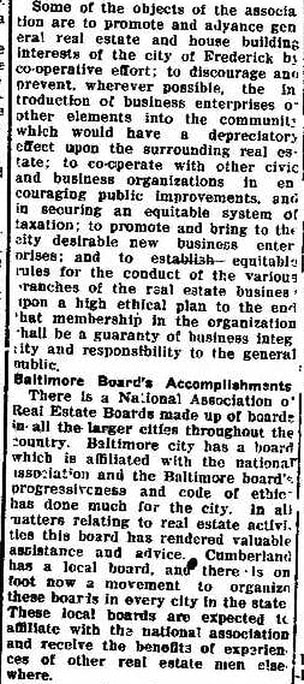

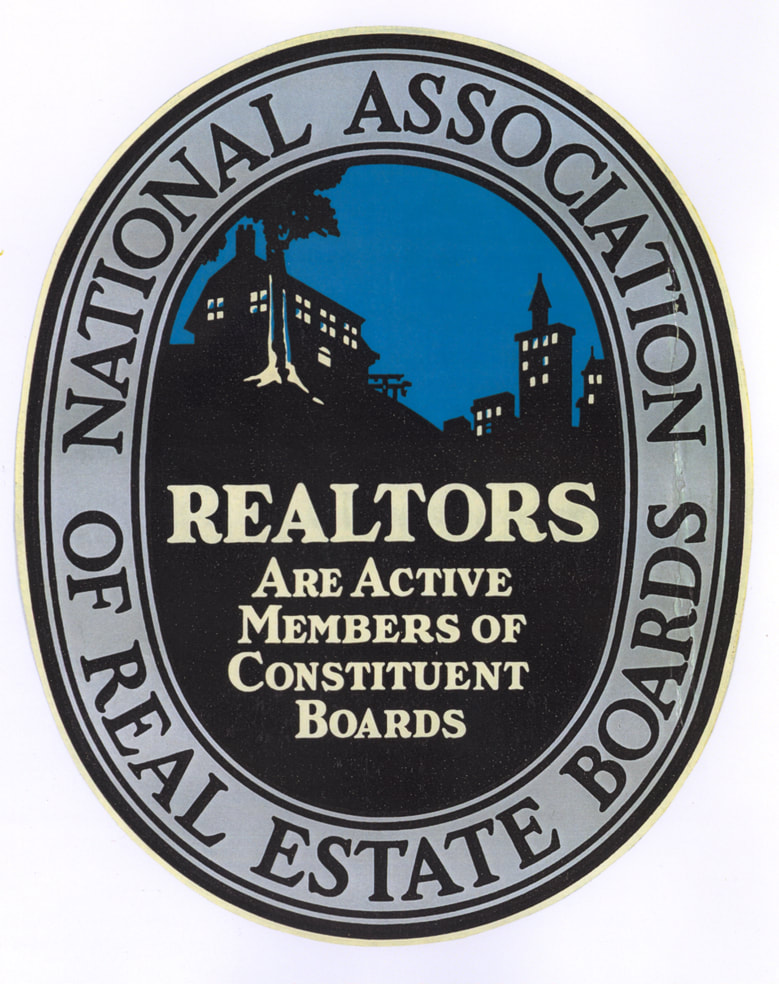







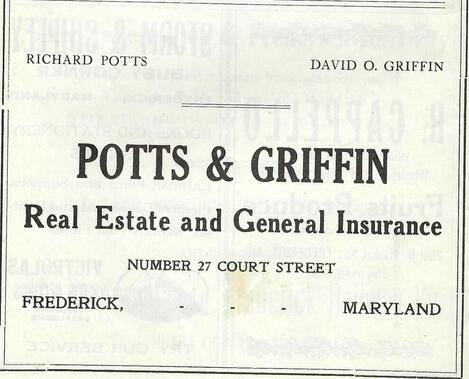








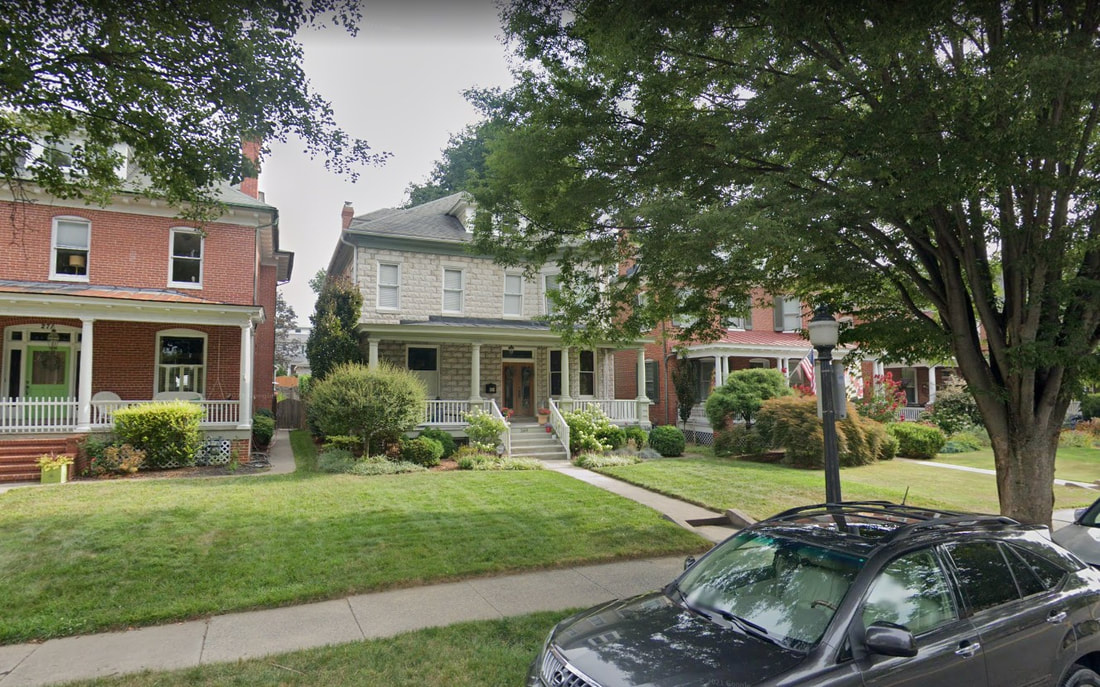


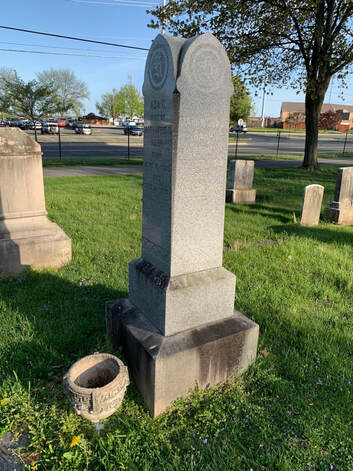

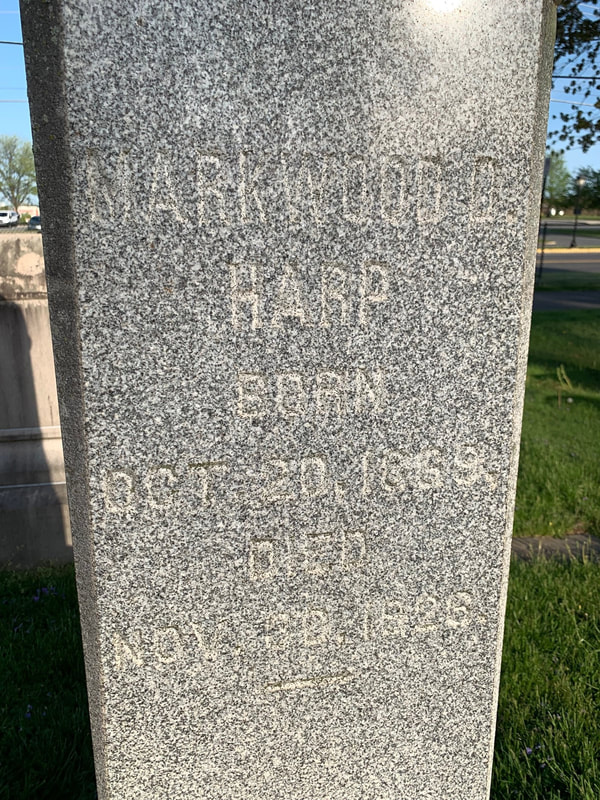


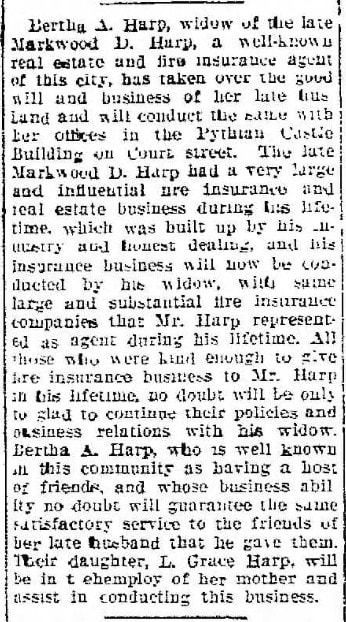



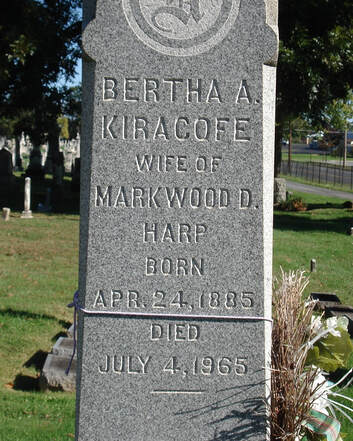



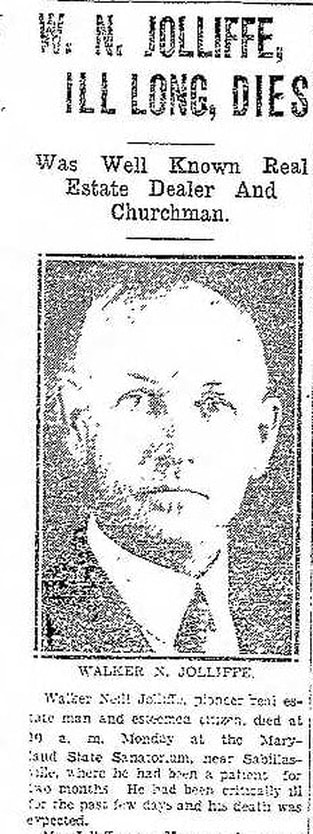
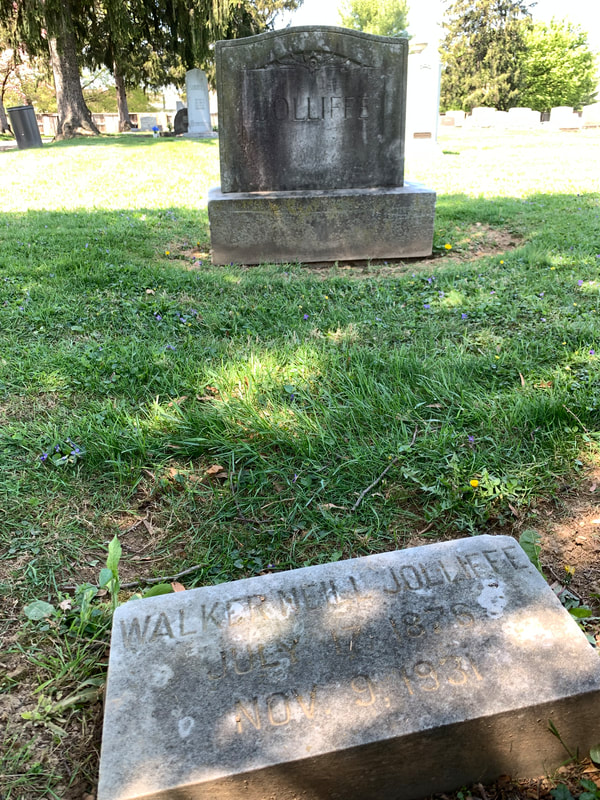







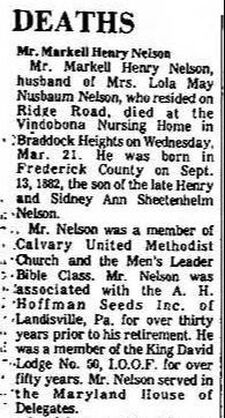






















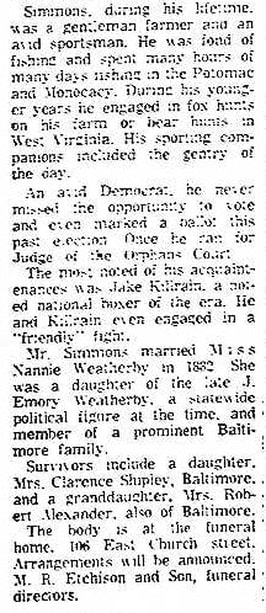


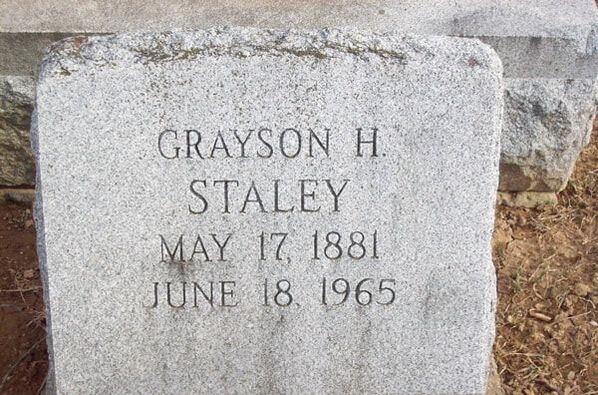













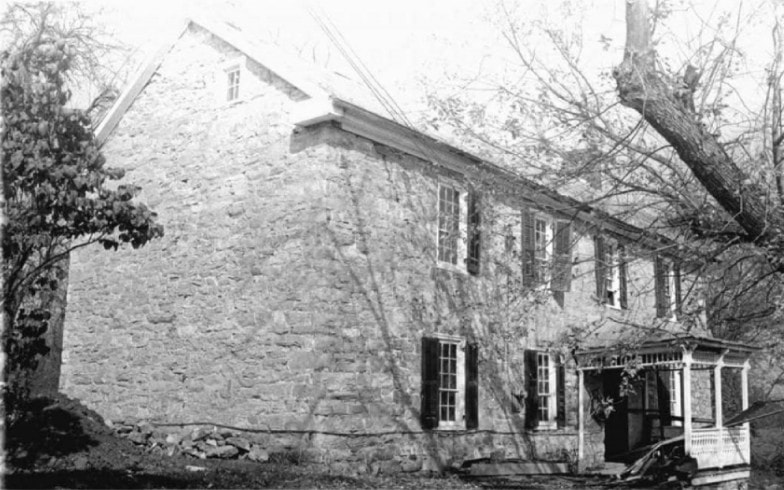

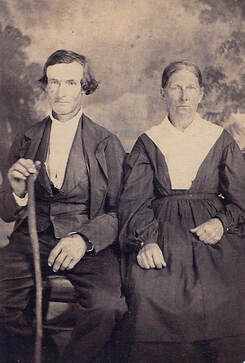














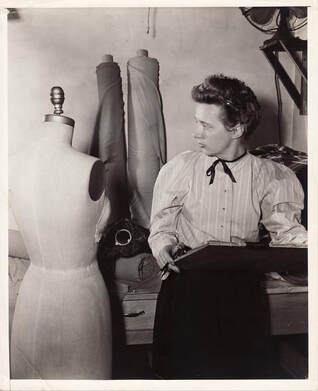

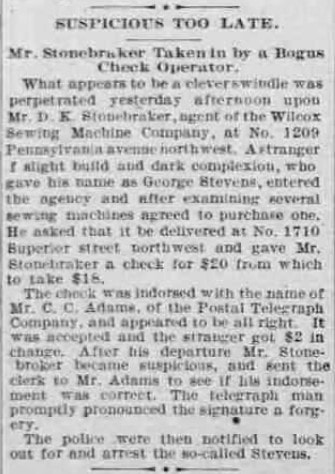

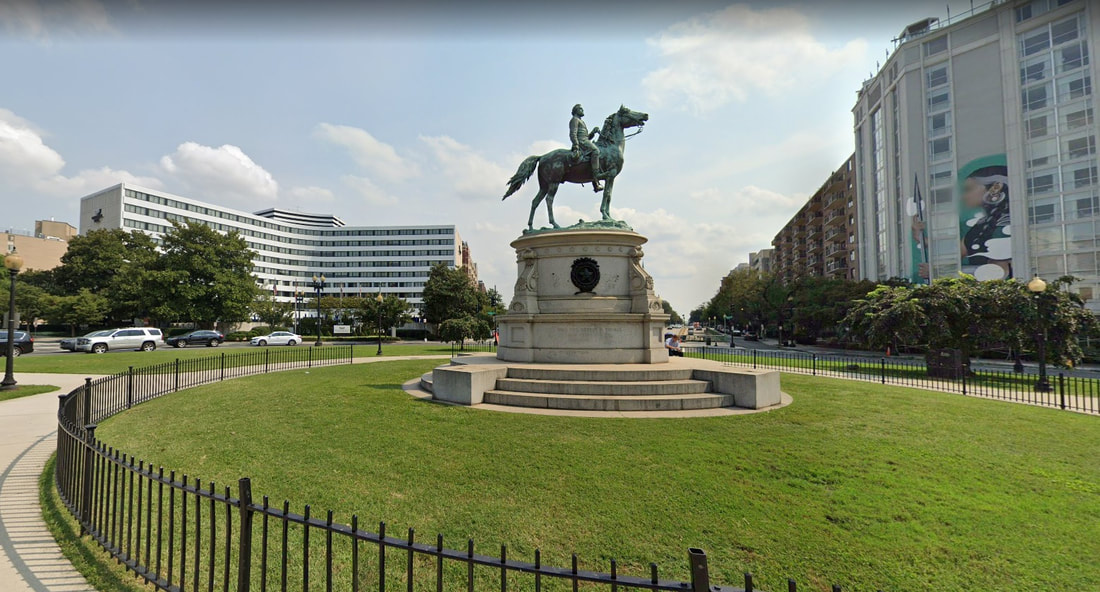


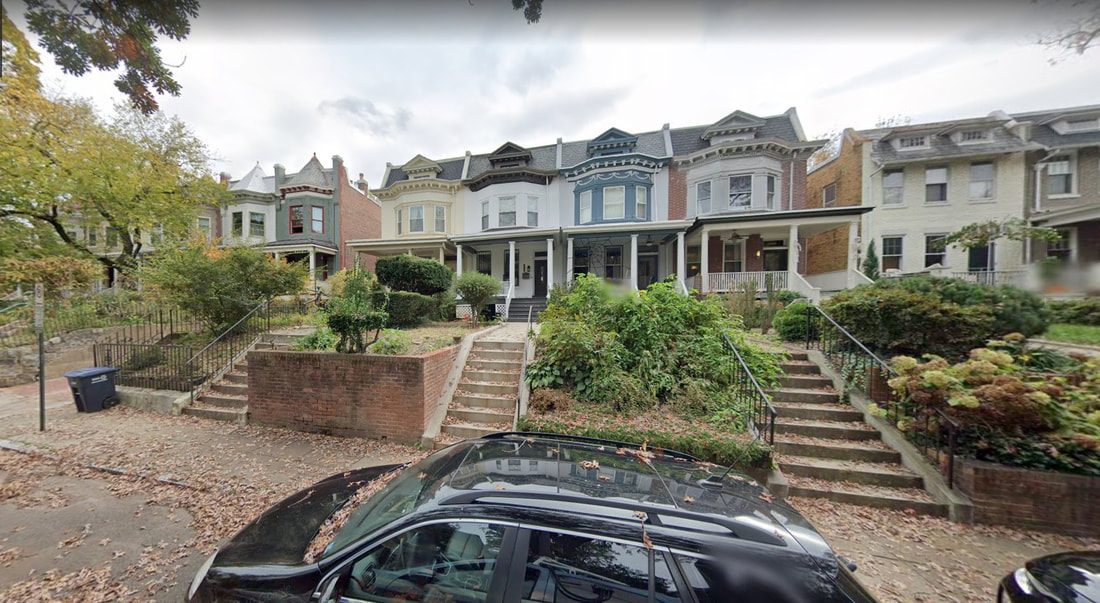
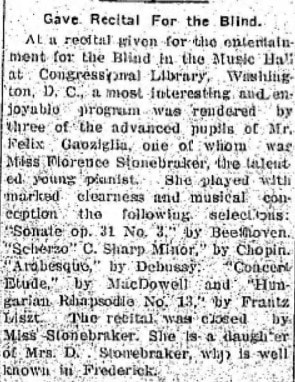






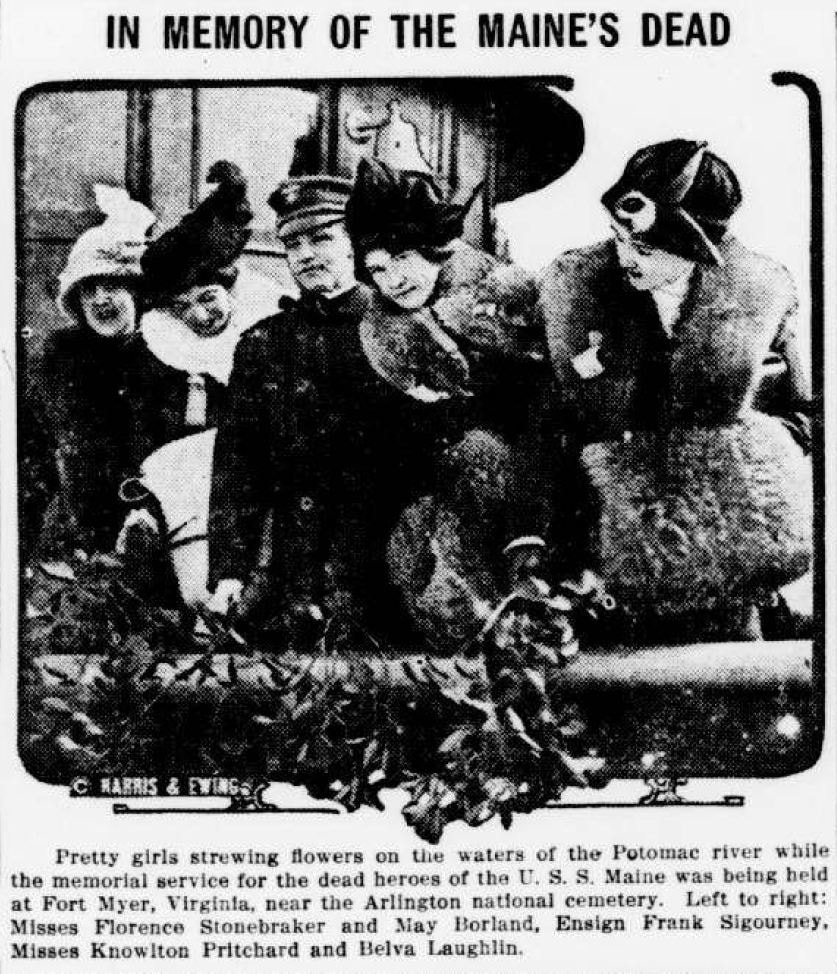

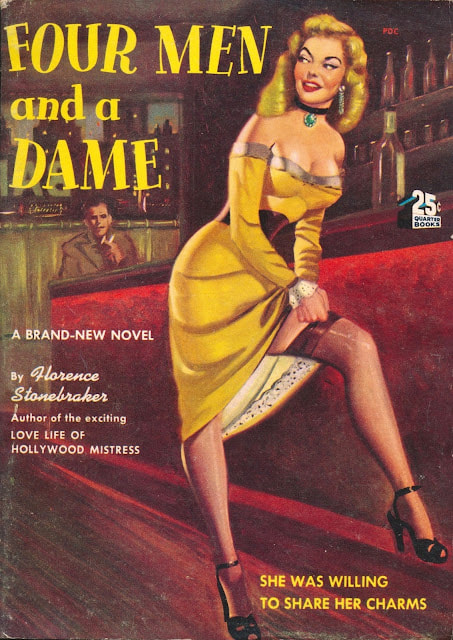
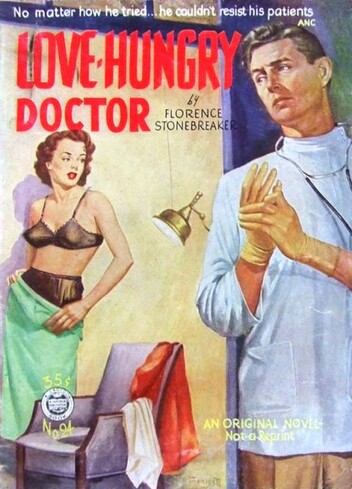


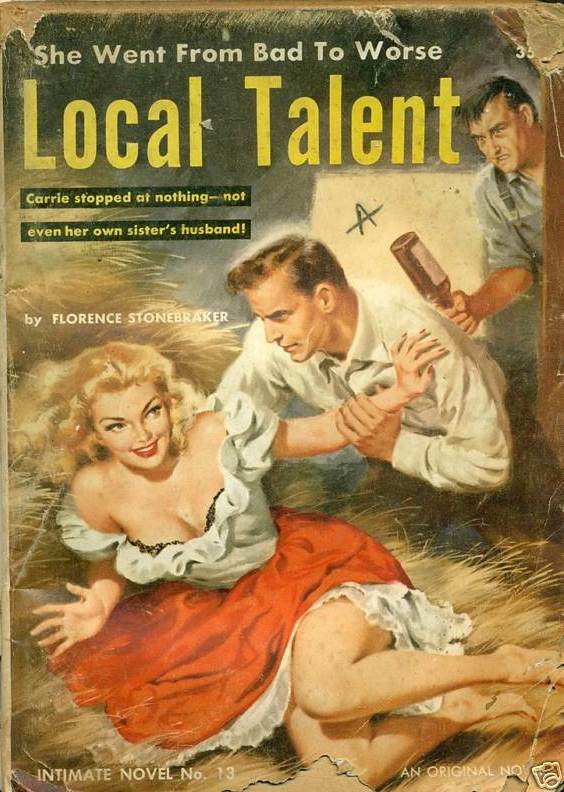










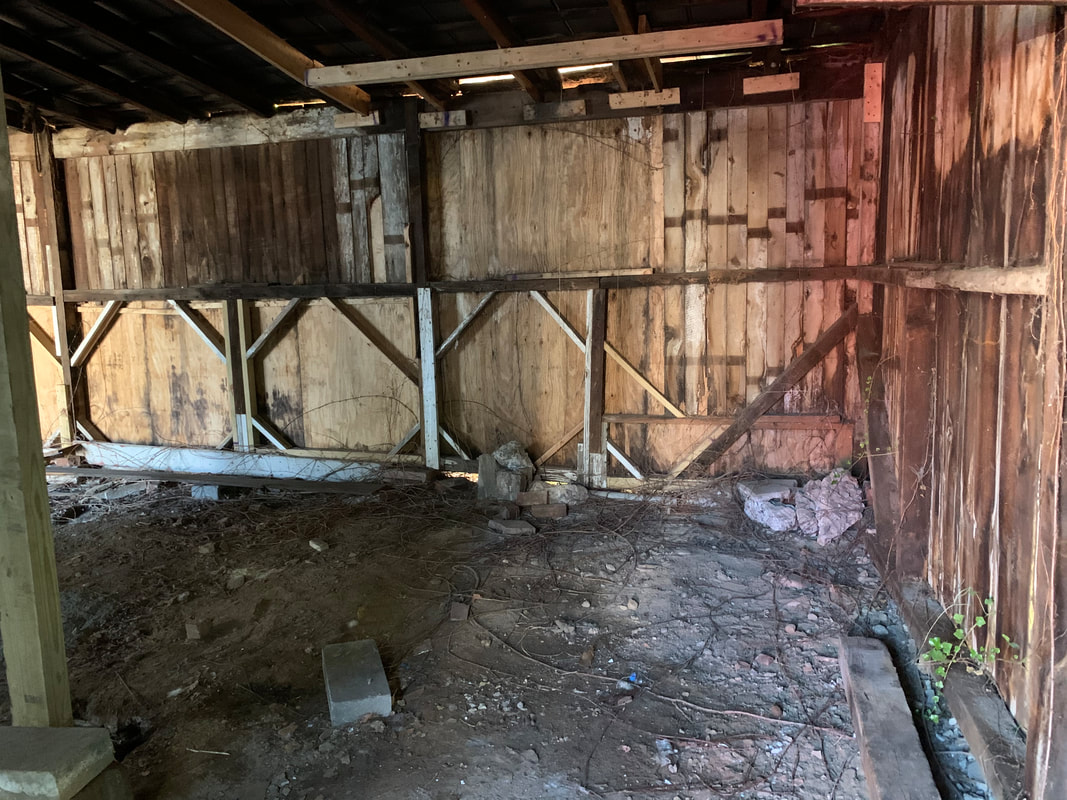





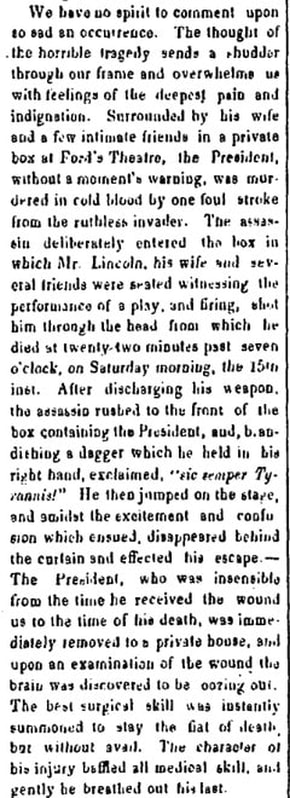
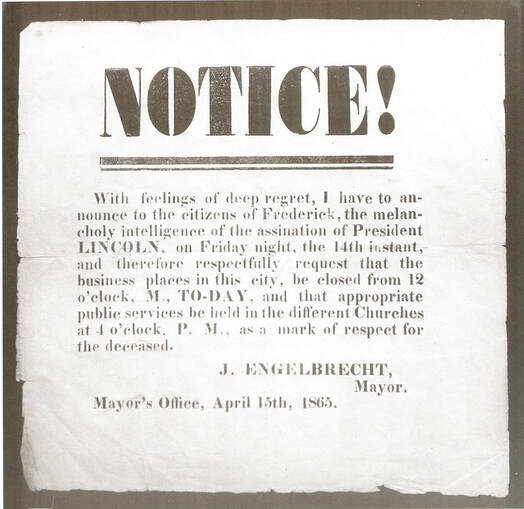

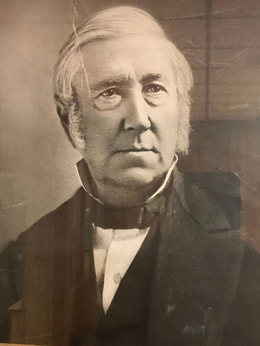


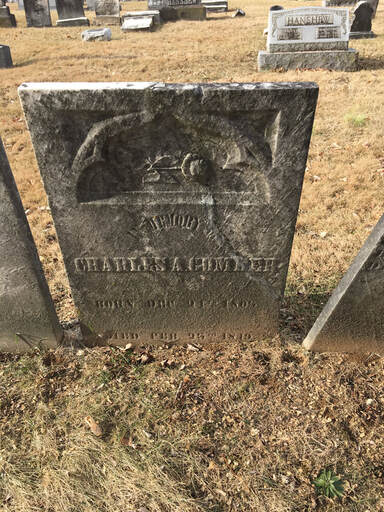

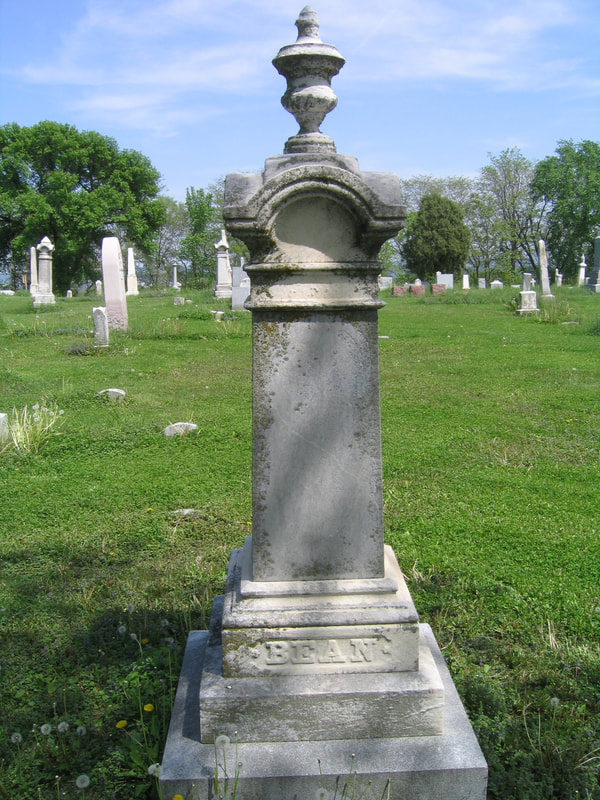











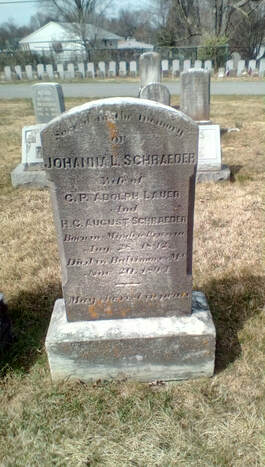









































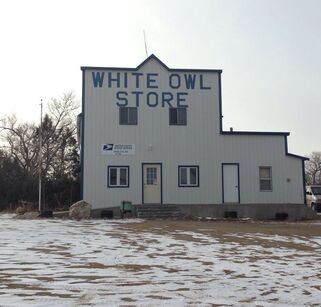
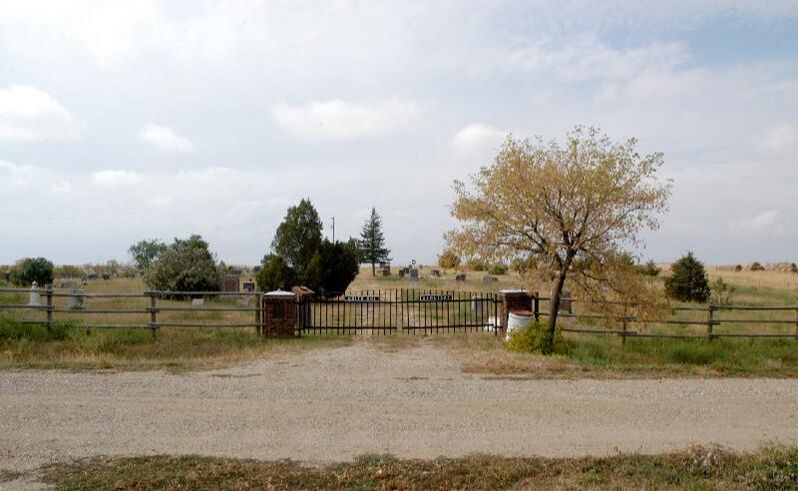

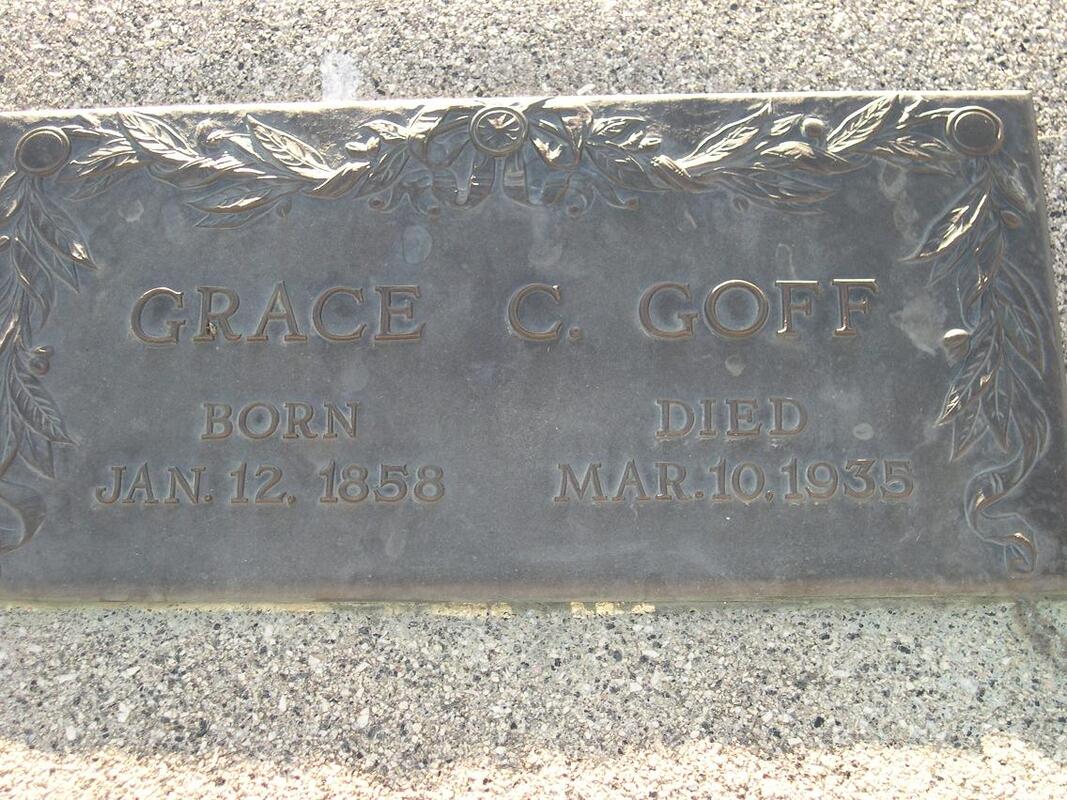


















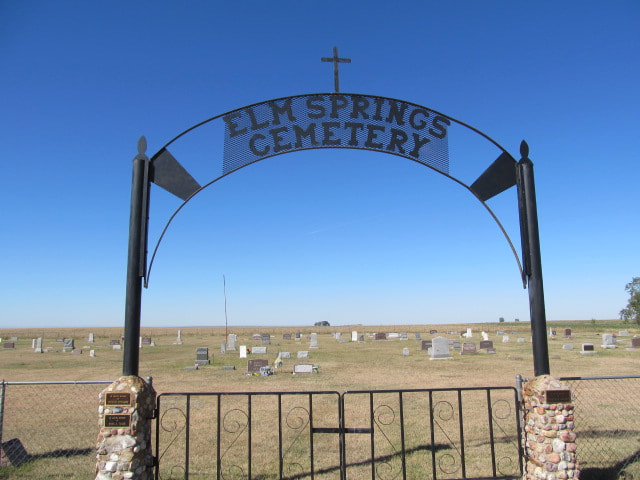



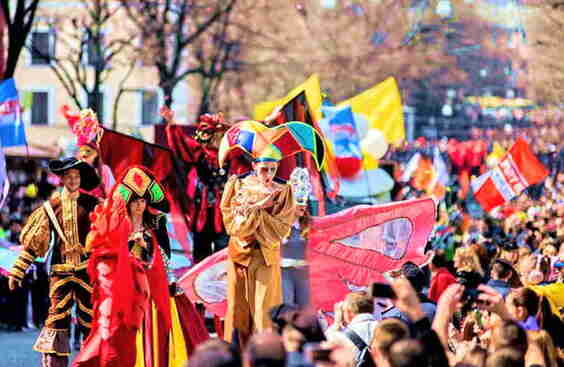









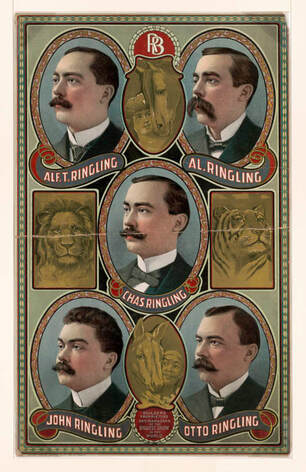








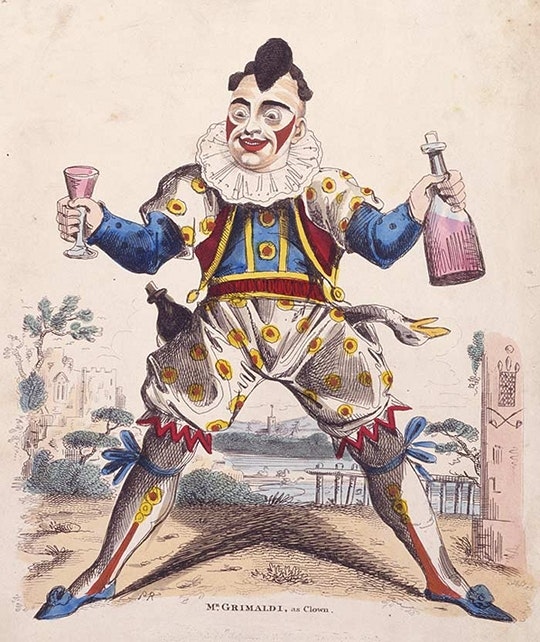




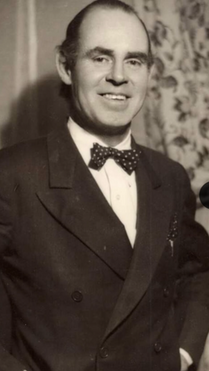
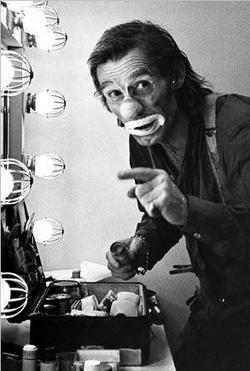






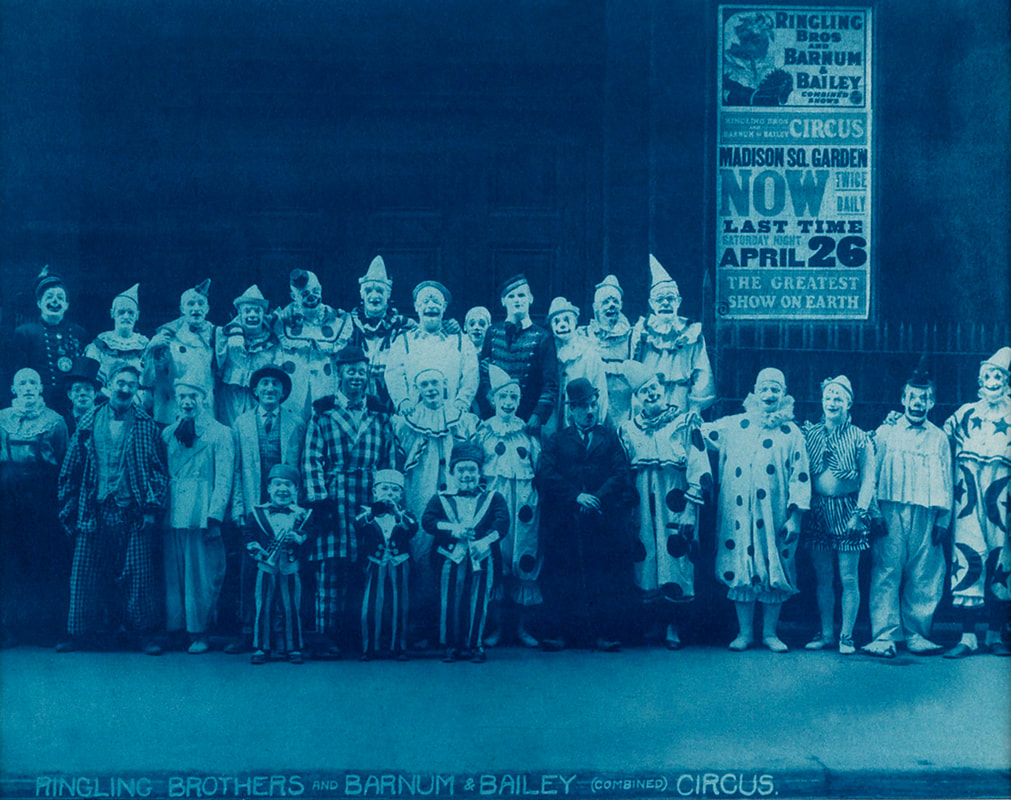










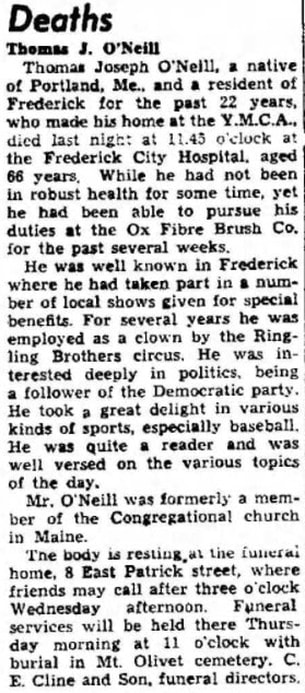


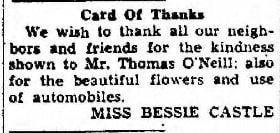
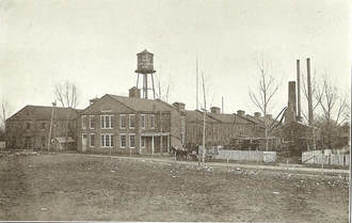



 RSS Feed
RSS Feed